NCR RSD Atlanta 7730K070 Remote Button Activator User Manual 497 0430074reva
NCR Corporation, RSD - Atlanta Remote Button Activator 497 0430074reva
2 1033 a 3 Installation or Users Manual
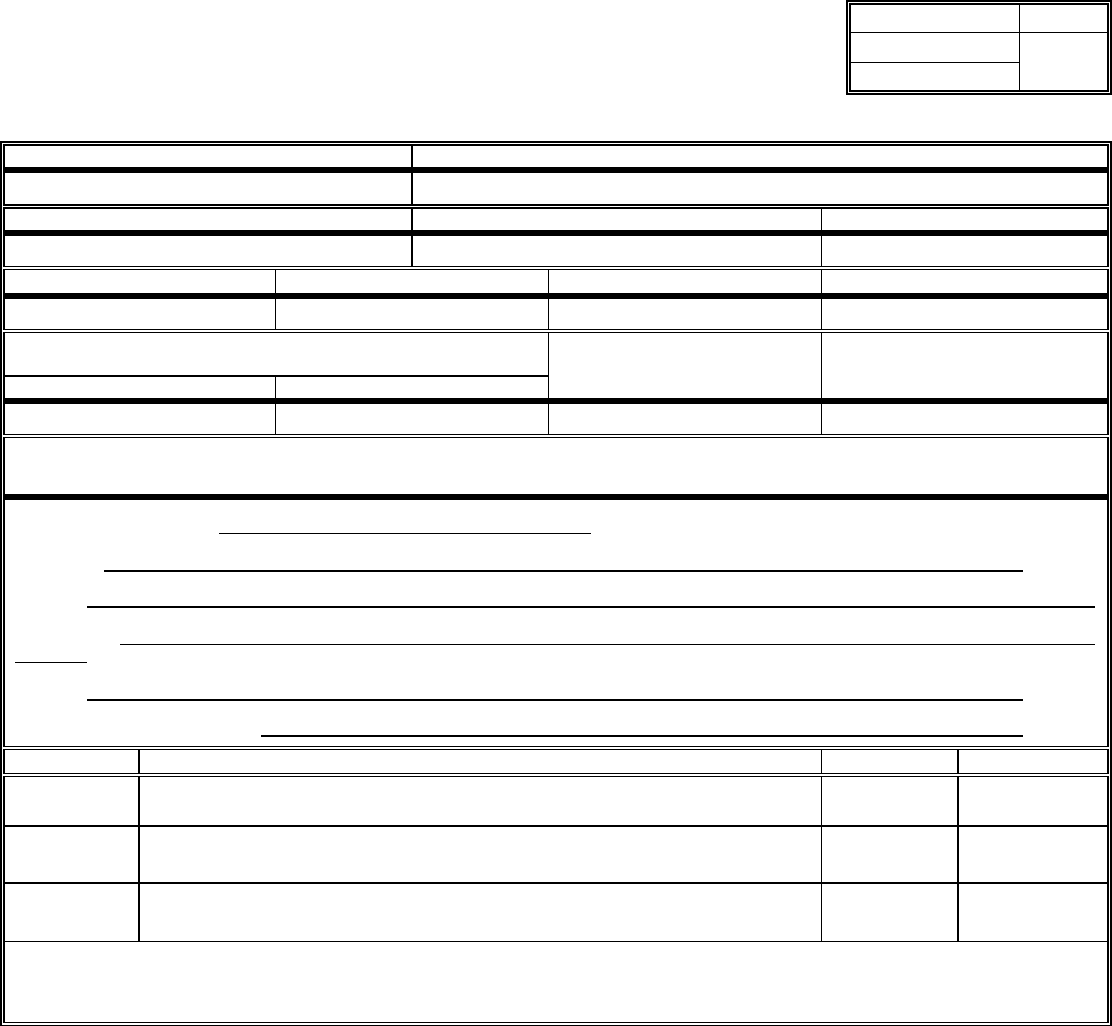
NCR Corporation SPECIFICATION
REV
497-0430074 A
PROCUREMENT SPECIFICATION 1 OF 22
GENERIC PART NO.
PART DESCRIPTION
Not Applicable 7730 RBA (Remote Button Activator), -1.5dBm EIRP (North America)
SIZE
SPEED, FREQ.
PACKAGE TYPE
Not Applicable 2.443 GHz
CAT. CODE
HARM. CODE
COMM. CODE
COMM
. NAME
8525.10.90.90
CONTROL PLANT
PREPARED BY
DATE
CODE
LOCATION
50 Atlanta Albert Claessen 03/07/2003
SUPPLIER’S APPROVAL
SUPPLIER’S PART NO.: TBD
SIGNED:
TITLE:
COMPANY: Avid Technologies, Inc
DATE:
REQUESTED RETURN DATE:
REVISION
APPROVAL
DATE
A 50DR12637 Albert
Claessen 03/07/2003
The content of this document is ‘NCR Intellectual Property’ and is the property of NCR Corporation. It is to be treated strictly confidential and
is not to be disclosed, reproduced, or used except as authorized in writing by NCR in connection with the manufacturer, maintenance and use
of the NCR equipment to which it pertains. The electronic version of this document is the revision controlled copy. All printed copies are
considered uncontrolled copies. Copyright 2002 NCR Corporation
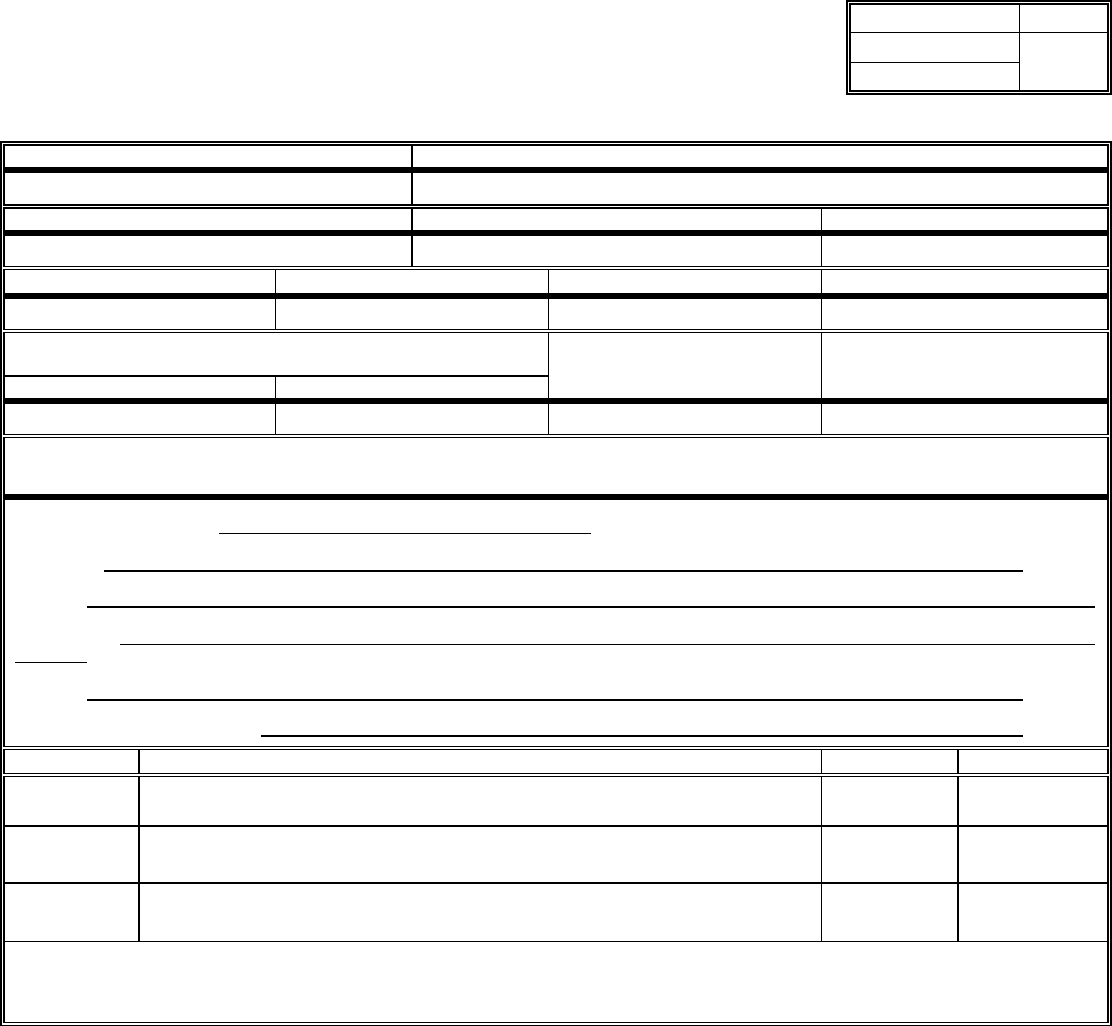
NCR Corporation SPECIFICATION
REV
497-0426473 B
PROCUREMENT SPECIFICATION 1 OF 22
GENERIC PART NO.
PART DESCRIPTION
Not Applicable 7730 RBA (Remote Button Activator), 10 dBm EIRP (EU)
SIZE
SPEED, FREQ.
PACKAGE TYPE
Not Applicable 2.443 GHz
CAT. CODE
HARM. CODE
COMM. CODE
COMM. NAME
8525.10.90.90
CONTROL PLANT
PREPARED BY
DATE
CODE
LOCATION
50 Atlanta David E. Berl August 7, 2002
SUPPLIER’S APPROVAL
SUPPLIER’S PART NO.: TBD
SIGNED:
TITLE:
COMPANY: Avid Technologies, Inc
DATE:
REQUESTED RETURN DATE:
REVISION
APPROVAL
DATE
A 50PDR12017 Albert
Claessen
B 50DR12637 Albert
Claessen 03/07/2003
The content of this document is ‘NCR Intellectual Property’ and is the property of NCR Corporation. It is to be treated strictly confidential and
is not to be disclosed, reproduced, or used except as authorized in writing by NCR in connection with the manufacturer, maintenance and use
of the NCR equipment to which it pertains. The electronic version of this document is the revision controlled copy. All printed copies are
considered uncontrolled copies. Copyright 2002 NCR Corporation
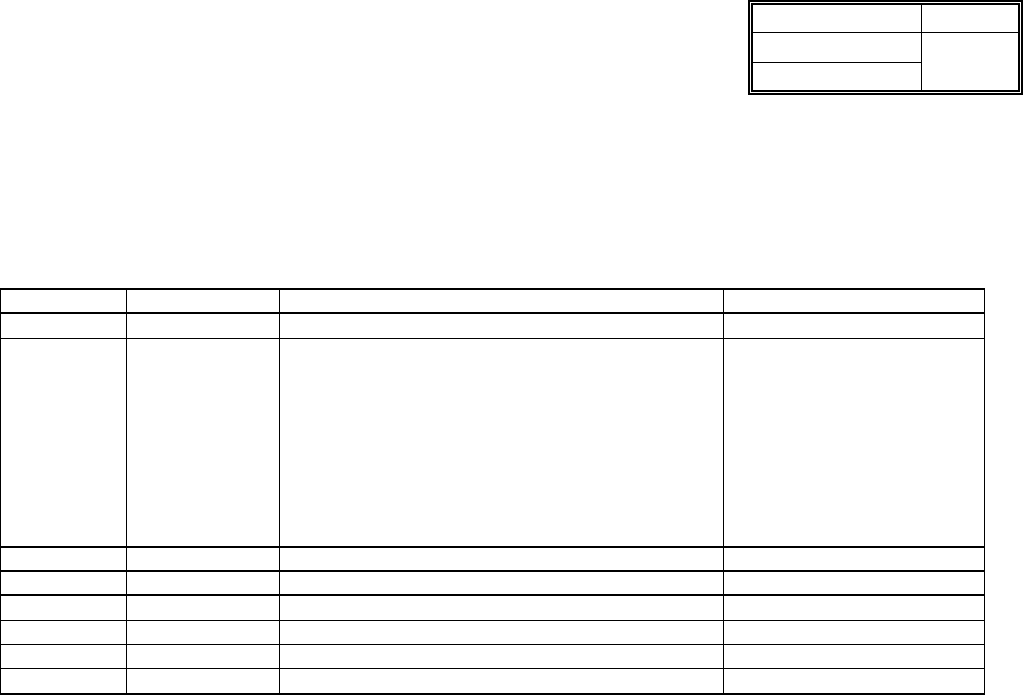
NCR Corporation SPECIFICATION
REV
497-0426473 B
PROCUREMENT SPECIFICATION 2 OF 22
NCR Corporation
RSG Atlanta
Document Change Sheet
Revision Date Description of Change Change Reason
A 8/7/2002 Original
B 03/07/2003 General
Creating two different models for the EU and
the Americas. Removing the US specific
requirements from this document.
3.2
Removing environmental test requirements in
operating situation.
6.2.1
Changing from ten to five units per kit
Requirements
discrepancy between the
US and EU

SPECIFICATION REV
497-0426473 B
3 OF 22
Table of Contents
1. SCOPE....................................................................................................................................6
2. ASSOCIATED DOCUMENTS.............................................................................................6
2.1 NCR Reference Documents.......................................................................................................................................6
2.2 Priority of Documents.................................................................................................................................................6
3. REQUIREMENTS..................................................................................................................7
3.1 Functional Requirements...........................................................................................................................................7
3.1.1. General.................................................................................................................................................................... 7
3.1.2. Operation ................................................................................................................................................................ 7
3.1.2.1 Single -Shot Mode............................................................................................................................................. 7
3.1.2.2 Repetitive Mode................................................................................................................................................ 8
3.1.2.3 Security Code Programming........................................................................................................................... 9
3.1.3. Transmitter ............................................................................................................................................................. 9
3.1.3.1 Operating Distance........................................................................................................................................... 9
3.1.3.2 Transmit Frequency.......................................................................................................................................... 9
3.1.3.3 Transmit Power................................................................................................................................................. 9
3.1.3.4 RF Modulation ................................................................................................................................................ 10
3.1.3.5 Transmit Data Rate......................................................................................................................................... 10
3.1.3.6 Transmit Data Duration ................................................................................................................................. 10
3.1.3.7 Message Format .............................................................................................................................................. 10
3.1.4. Antenna................................................................................................................................................................. 10
3.1.5. Enclosure (see figures below) ........................................................................................................................... 10
3.1.6. Keypad.................................................................................................................................................................. 11
3.1.7. Battery ................................................................................................................................................................... 11
3.1.7.1 Battery Model.................................................................................................................................................. 11
3.1.7.2 Battery Life ...................................................................................................................................................... 11
3.1.7.3 Battery replacement........................................................................................................................................ 11
3.2 Environment Test Requirements...........................................................................................................................12
3.2.1. Temperature & Humidity................................................................................................................................... 12
3.2.1.1 Operating.......................................................................................................................................................... 12
3.2.1.2 Non-Operating................................................................................................................................................. 12
3.2.2. Shock and Vibration ........................................................................................................................................... 12
3.2.2.1 Operating.......................................................................................................................................................... 12
3.2.2.2 Non-Operating................................................................................................................................................. 13
3.2.2.3 Contamination ................................................................................................................................................. 13
4. DIAGNOSTICS REQUIREMENTS...................................................................................13
5. LEGAL AND REGULATORY REQUIREMENTS..........................................................14
5.1.1. Safety Requirements........................................................................................................................................... 14
5.1.2. Disposal Requirements....................................................................................................................................... 14
5.2 Electromagnetic Compatibility ..............................................................................................................................14

SPECIFICATION REV
497-0426473 B
4 OF 22
5.3 RF Certification..........................................................................................................................................................14
5.4 Human Exposure Limits..........................................................................................................................................14
6. MARKING AND PACKAGING .........................................................................................15
6.1 Unit Marking...............................................................................................................................................................15
6.1.1. Label and Marking on RBA .............................................................................................................................. 15
6.2 Packaging .....................................................................................................................................................................15
6.2.1. Packaging for RBA ............................................................................................................................................. 15
7. QUALITY ASSURANCE PROVISIONS..........................................................................16
7.1 Product Quality ..........................................................................................................................................................16
7.2 Quality Documentation............................................................................................................................................16
7.3 Warranty Period........................................................................................................................................................16
8. PRODUCT ACCEPTANCE...............................................................................................17
8.1 Dock-to-Stock..............................................................................................................................................................17
8.2 Process Change...........................................................................................................................................................17
8.3 Quality Performance Records ................................................................................................................................17
8.4 Statistical Process Control (SPC)..........................................................................................................................17
8.5 Product AQL (Acceptable Quality Level)...........................................................................................................18
8.5.1. MTBF .................................................................................................................................................................... 18
8.5.2. Definition of Failure ........................................................................................................................................... 18
8.6 Quality Goal ................................................................................................................................................................18
9. ENGINEERING CHANGE PROVISIONS.......................................................................19
9.1 General..........................................................................................................................................................................19
9.2 Request From Supplier.............................................................................................................................................19
9.3 Approval .......................................................................................................................................................................19
9.4 NCR Changes..............................................................................................................................................................19
10. DESIGN QUALIFICATION TEST REQUIREMENTS................................................20
APPENDIX A: REGULATORY REQUIREMENTS..............................................................21

SPECIFICATION REV
497-0426473 B
5 OF 22
APPENDIX B: LIST OF COUNTRIES FOR RBA DEPLOYMENT ...................................22
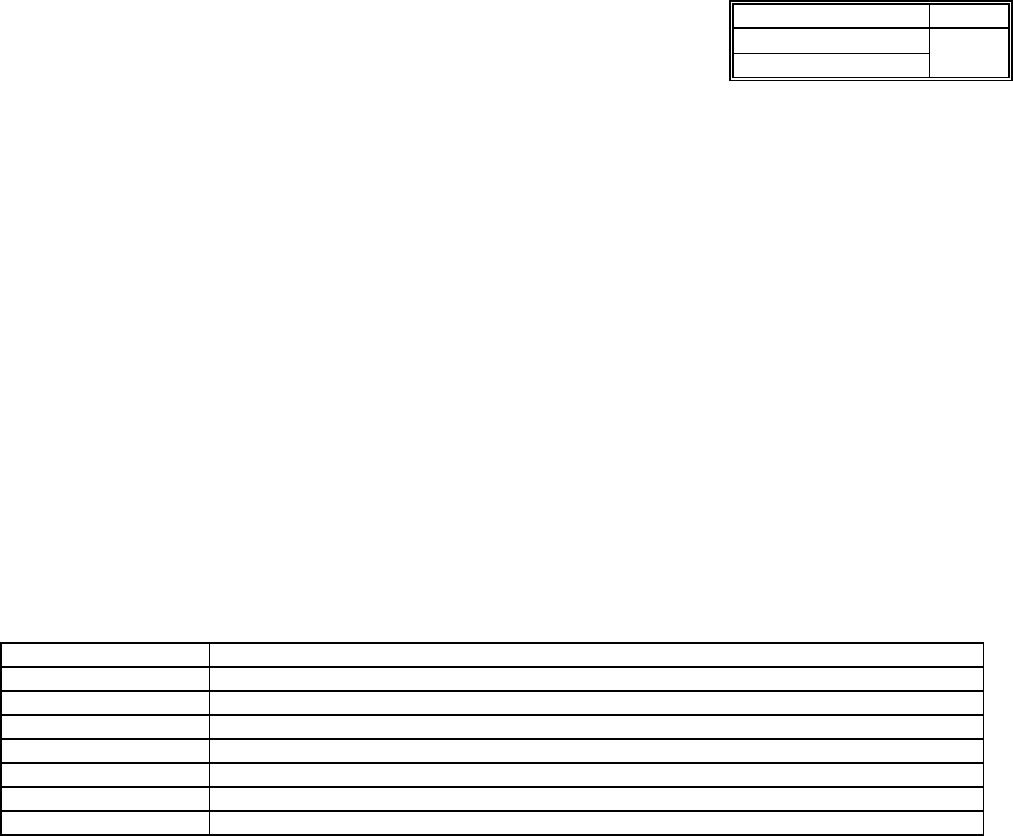
SPECIFICATION REV
497-0426473 B
6 OF 22
1. Scope
The requirements for the 7730 Remote Button Activator, herein referred to as the RBA, are specified in
this procurement specification.
The RBA shall function as a remote display sequence activator for NCR Electronic Shelf Labels (ESL).
The RBA is intended for use in the countries listed in Appendix B.
The RBA shall meet the following objectives:
• Small and Light
• Robust design
• 10 buttons
• Long battery life with replaceable battery
• Key chain or belt attachment
2. Associated Documents
2.1 NCR Reference Documents
497- 0424649 DecisioNet/RealPrice RBA Product Requirements
230-0415412 NCR-7730 DecisioNet Functional Specification (3.0 Air Interface and Protocol)
497-0412176 Regulator Compliance Guidelines
89/336/EEC EMC Directive
UL60950
EN/IEC06950
NCR Corporate Packaging Standard B-2, Section B2
NCR Packaging Standard 10-001
2.2 Priority of Documents
In the event of conflict between documents, the priority shall be as follows:
• Procurement Specification
• Business Agreement between NCR and Manufacturing Supplier
• Other applicable documents and drawings
• Purchase Order
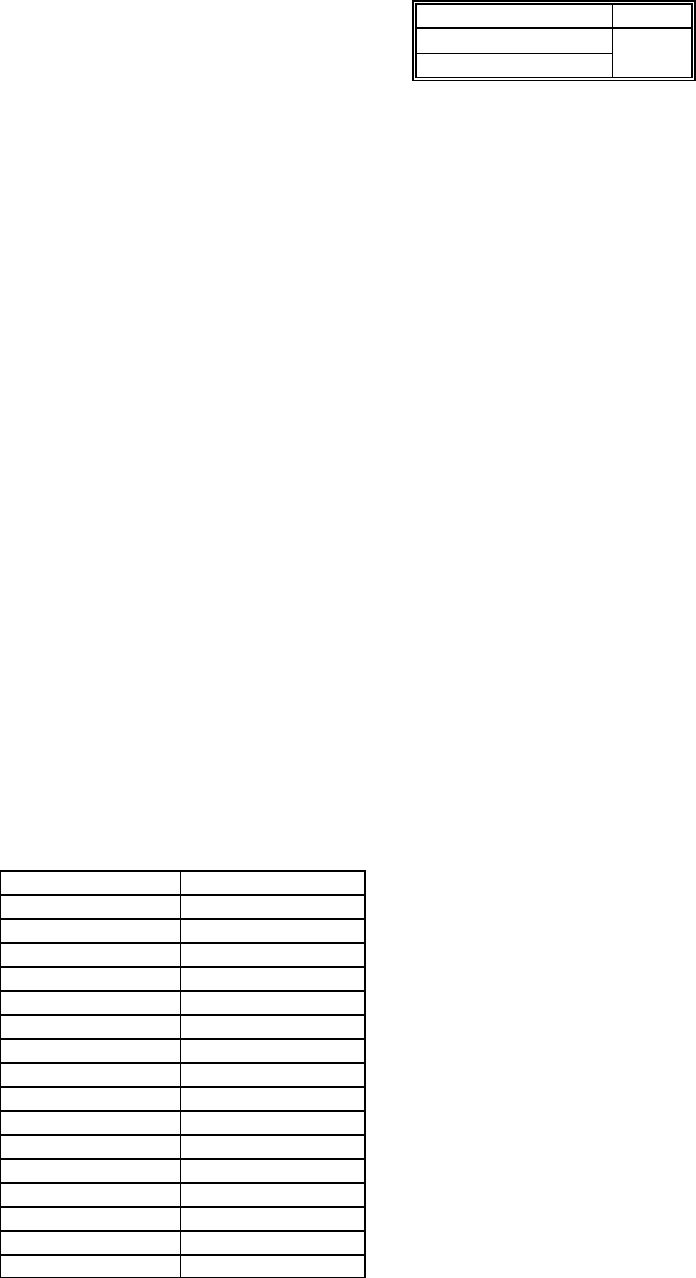
SPECIFICATION REV
497-0426473 B
7 OF 22
3. Requirements
3.1 Functional Requirements
3.1.1. General
1. The RBA shall consist of a ten button Radio Frequency (RF) transmitter device designed to send
commands to RealPrice electronic shelf labels (ESL).
2. The RBA shall communicate with ESLs using the High Signal Input Communication Mode as
specified in 230-0415412.
3.1.2. Operation
3.1.2.1 Single-Shot Mode
1. Each key press lasting between 0.5 and 1.873 seconds shall result in a “single-shot” mode operation
as described below:
(a) Program the 4th Sequence Register with 128 bits of information. Only one
display register shall be programmed with FFh; all others shall be
programmed with 00h. The display register programmed with FFh is
dependent on which button(s) is pressed per the following table:
Button Display Register
1 16
2 15
3 14
4 13
5 12
6 11
7 10
8 9
9 8
Alt followed by 1 1
Alt followed by 2 2
Alt followed by 3 3
Alt followed by 4 4
Alt followed by 5 5
Alt followed by 6 6
Alt followed by 7 7
(b) Select the 4th Sequence Register for display.
(c) Send the Switch Activation command.
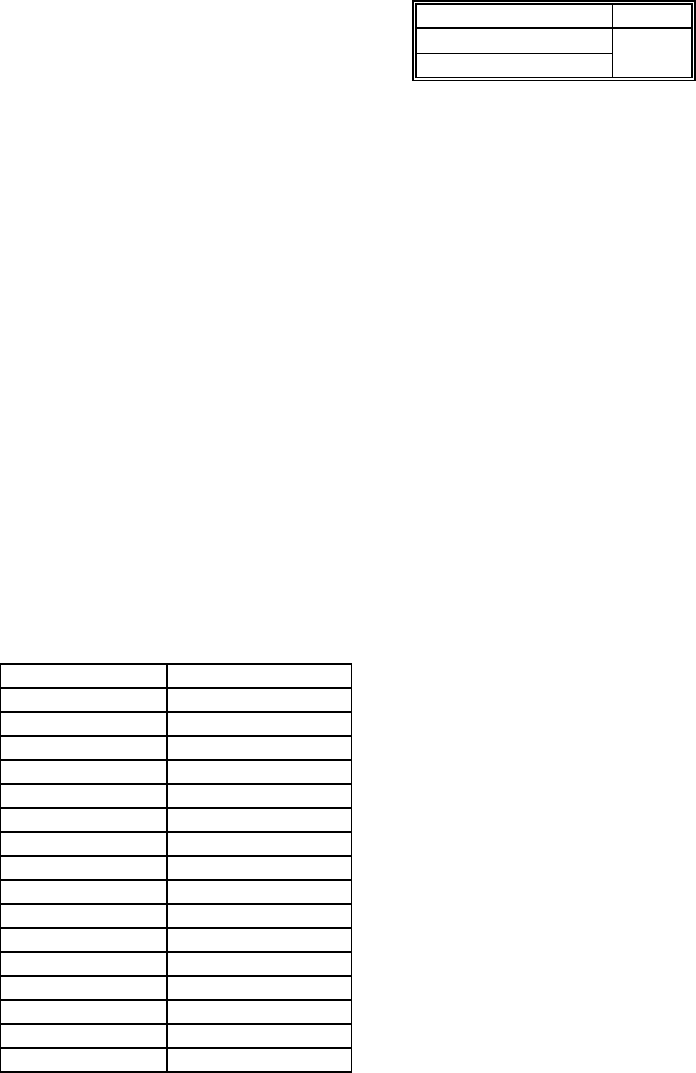
SPECIFICATION REV
497-0426473 B
8 OF 22
(d) The sequence (a, b, c) defined above shall be chained and sent as a single
transmit burst.
(e) The Alt key function shall remain in effect for no more than 5 seconds (the
operator has 5 seconds to select a button after pressing the Alt key.) The Alt
function is terminated at the end Alt + # command sequence.
2. Simultaneous activation of two or more buttons shall not result in commands, other than those listed
above, being sent to the ESL.
3.1.2.2 Repetitive Mode
1. Each numbered key press lasting longer than 1.873 seconds shall result in a repetitive mode
operation as described below:
(a) Program the 4th Sequence Register with 128 bits of information. Only 1
display register shall be programmed with FFh; all others shall be
programmed with 00h. The display register programmed with FFh is
dependent on which button is pressed per the following table:
Button Display Register
1 16
2 15
3 14
4 13
5 12
6 11
7 10
8 9
9 8
Alt 1 1
Alt 2 2
Alt 3 3
Alt 4 4
Alt 5 5
Alt 6 6
Alt 7 7
(b) Select the 4th Sequence Register for display
(c) Send the Switch Activation command.
(d) When a numbered button is held down for more than 1.873 second, the entire
sequence (a, b, c) shall be sent repetitively every 1.873 seconds. To conserve
battery life, the maximum transmit time shall be limited to 8 repetitions.
(e) The sequence (a, b, c) defined above shall be sent as a single concatenated
transmit burst..

SPECIFICATION REV
497-0426473 B
9 OF 22
(f) The Alt key function shall remain in effect for no more than 5 seconds (the
operator has 5 seconds to select a button after pressing the Alt key.) The Alt
function is terminated at the end Alt + # command sequence.
2. Simultaneous activation of two or more buttons shall not result in commands, other than those listed
above, being sent to the ESL.
3.1.2.3 Security Code Programming
The RBA shall have a programming mode whereby the operator shall be able to input, via the keypad, a
three-digit store ID code. Valid store ID codes are 000 to 203 and 205 to 255. ID 255 is the factory
programmed default for ESLs and RBA. ID 204 is reserved for broadcast messages and can not be
programmed.
The code shall be stored in non-volatile memory. Battery removal shall not require the reprogramming of
the store ID code.
The following procedure shall be followed to re-program the codes:
• Press and hold buttons 5 and 6 simultaneously (> 5 seconds) until the RBA indicates that
programming mode is entered with three short flashes of the LED.
• Enter the three digits for to program the store ID. The Alt button enters a “0”.
• After the third digit is entered the RBA will indicate the programming was successful with three short
flashes of the LED or that programming failed with one long pulse.
The store ID code shall be sent with every command sequence as defined in 230-0415412.
3.1.3. Transmitter
3.1.3.1 Operating Distance
The operating distance is measured from the front (LED side) of the RBA housing to the surface of the
ESL display with the RBA perpendicular to the ESL surface and the bottom of the ESL and RBA both
aligned horizontally.
The RBA shall be able to activate a display change on an ESL with a nominal sensitivity rating of -10
dBm at a minimum distance of 2 inches.
The RBA shall not be able to activate a display change on an ESL with a nominal sensitivity rating of -10
dBm at a distance of over 12 inches.
3.1.3.2 Transmit Frequency
The transmit frequency shall be 2.443 GHz +/- 2% (center of ISM band), including initial tolerance and
drift of the RF Transceiver. The RF transmitter shall be designed to operate in the ISM band at 2.400 GHz
to 2.4835 GHz. The transmitter circuit shall not require any adjustments during production nor shall any
adjustments be required in store environments.
3.1.3.3 Transmit Power
The transmitter power shall be10 dBm EIRP maximum.
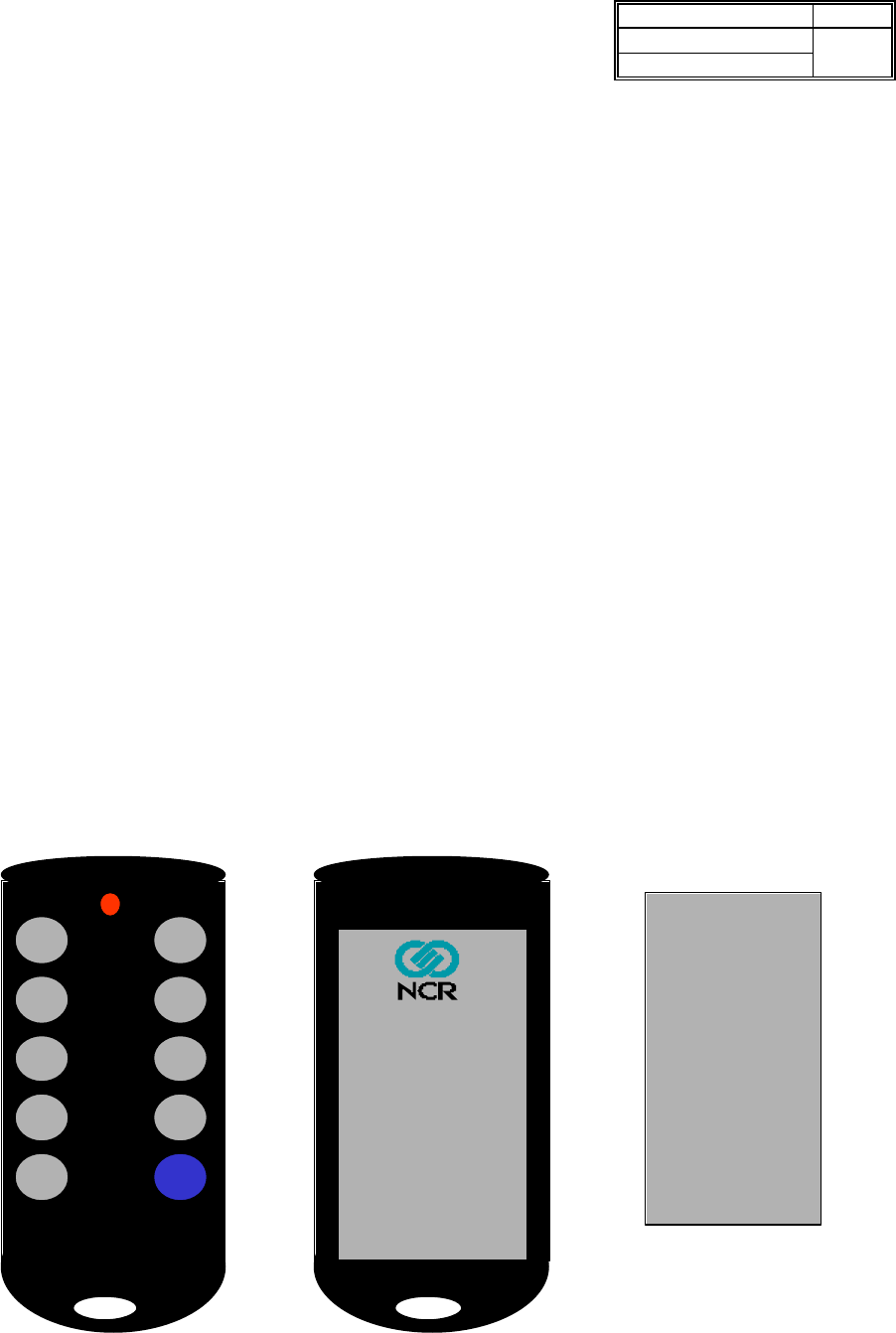
SPECIFICATION REV
497-0426473 B
10 OF 22
3.1.3.4 RF Modulation
The RF modulation shall be On-Off-Keying (OOK) amplitude modulation with a minimum 20dB
modulation depth.
3.1.3.5 Transmit Data Rate
The transmit data rate shall be 16.384 Kbits/sec.
3.1.3.6 Transmit Data Duration
Each key press shall initiate a command sequence per 3.1.2 that includes communication protocol data
as specified in 230-0415412.
3.1.3.7 Message Format
The message format for the RBA transmission shall be as specified in 230-0415412.
3.1.4. Antenna
The antenna shall be completely contained within the enclosure.
3.1.5. Enclosure (see figures below)
1 - Inventory
2 - Facings
3 - Shelf #
4 - Aisle #
5 - Next del
6 - Last del
7 - Promo type
8 - A
9 - B
Alt 1 - C
Alt 2 - D
Alt 3 - E
Alt 4 - F
Alt 5 - G
Alt 6 - H
Alt 7 - I
FCC xxxxxxx
CE xxxxxxxx
xxxxxxxxxxxx
Place Display
Key Here
1 6
2 7
3 8
4 9
5
RealPrice
ALT

SPECIFICATION REV
497-0426473 B
11 OF 22
1. Preferably, a standard off-the-shelf 10-button enclosure will be used for the RBA. This
enclosure shall be designed specifically for RF transmitter applications. The enclosure
shall have the approximate dimensions shown below:
(a) Length: 3.5 inches
(b) Width: 1.5 inches
(c) Depth: 0.625 inch max.
2. The back of the enclosure shall include a recessed area for two labels. One label shall be
used to display permanent information such as part number, FCC certification, etc. per
6.1.1. The other label shall be for a customer applied/replaceable keypad legend.
3. The enclosure shall accommodate a standard user replaceable coin cell battery.
4. The enclosure shall be black.
5. The enclosure shall not have exposed metal parts.
6. The enclosure shall have a provision for securely attaching a key ring.
7. No special tools shall be required to replace the battery.
3.1.6. Keypad
• The keypad shall be a ten-button, rubber membrane keypad with carbon puck contacts.
• The contact patterns shall be plated or protected to provide corrosion resistance and longer life.
• Each of the ten buttons shall provide tactile feedback to the operator.
• Key designations shall be legible for the life of the keypad.
• The keypad shall be skin oil, cleaning agent, and hand lotion resistant.
• Each of the ten buttons shall have an actuation force of 155 +/- 20 grams.
• Each of the ten buttons shall have a contact force of 80 +/- 20 grams.
3.1.7. Battery
3.1.7.1 Battery Model
The RBA shall be powered by CR2032, 20mm diameter, 3 Volt, 220 mAh, lithium coin cells.
3.1.7.2 Battery Life
The operating life of the battery shall provide for a minimum of 1.3 million single-shot mode (section
3.1.2.1) operations.
3.1.7.3 Battery replacement
The Batteries shall be replaceable. Opening the RBA cabinet to replace the batteries is and acceptable
solution.
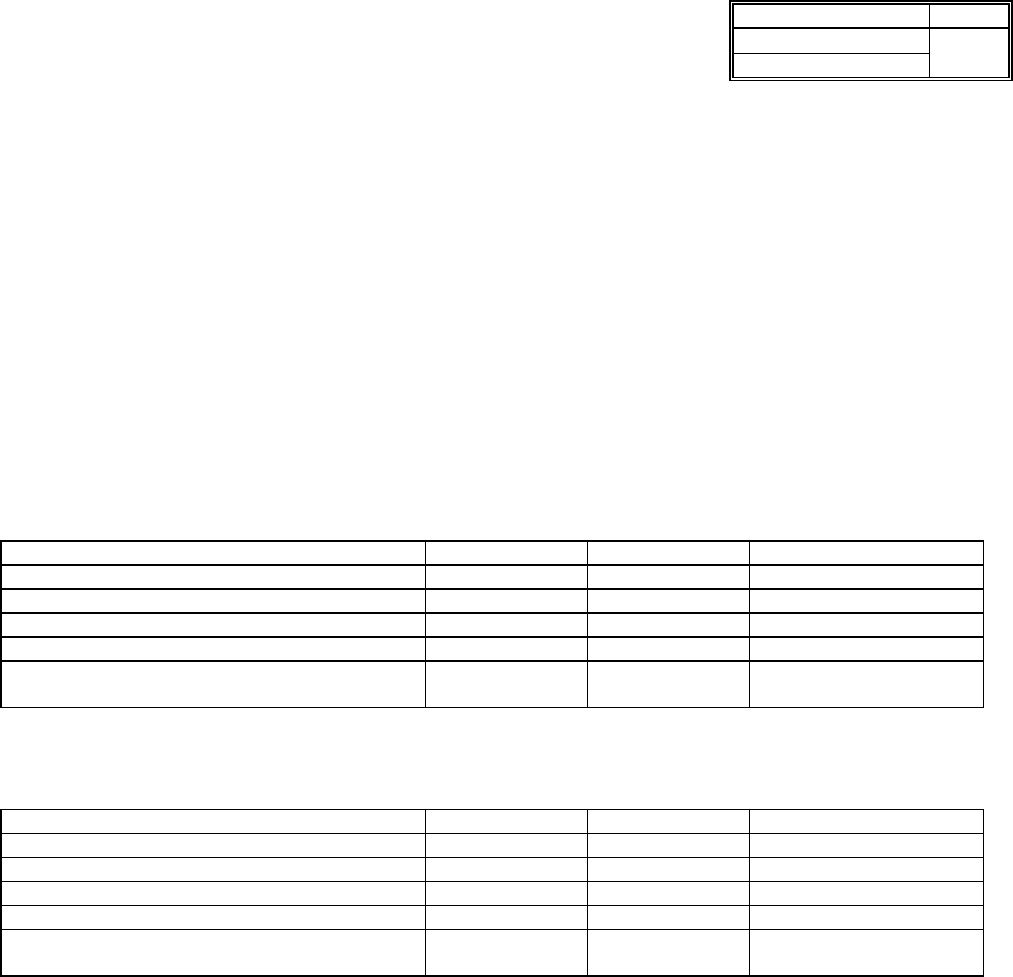
SPECIFICATION REV
497-0426473 B
12 OF 22
3.2 Environment Test Requirements
3.2.1. Temperature & Humidity
3.2.1.1 Operating
Operating temperature and humidity testing per NCR standard procedures is not applicable. This is hand-
held device that can not operate stand-alone and is intended for use in a conditioned envi ronment.
3.2.1.2 Non-Operating
3.2.1.2.1 Storage
Min. Max. Note
Period of Storage Range - 3 months
Temperature Range (Dry Bulb) 10 o C +50 o C
Temperature Change - 15 o C/Hr.
Relative Humidity Range 10 % 90 % No condensation
Barometric Pressure 70x103 Pa 105x103 Pa A maximum of 2,000
meter altitude
3.2.1.2.2 Shipping
Min. Max. Note
Period of Storage Range - 3 months
Temperature Range (Dry Bulb) -40 o C +60 o C
Temperature Change - 15 o C/Hr.
Relative Humidity Range 5 % 95 % No condensation
Barometric Pressure 70x103 Pa 105x103 Pa A maximum of 2,000
meter altitude
3.2.2. Shock and Vibration
3.2.2.1 Operating
Operating temperature and humidity testing per NCR standard procedures is not applicable. This is hand-
held device that can not operate stand-alone and is intended for use in a conditioned environment.
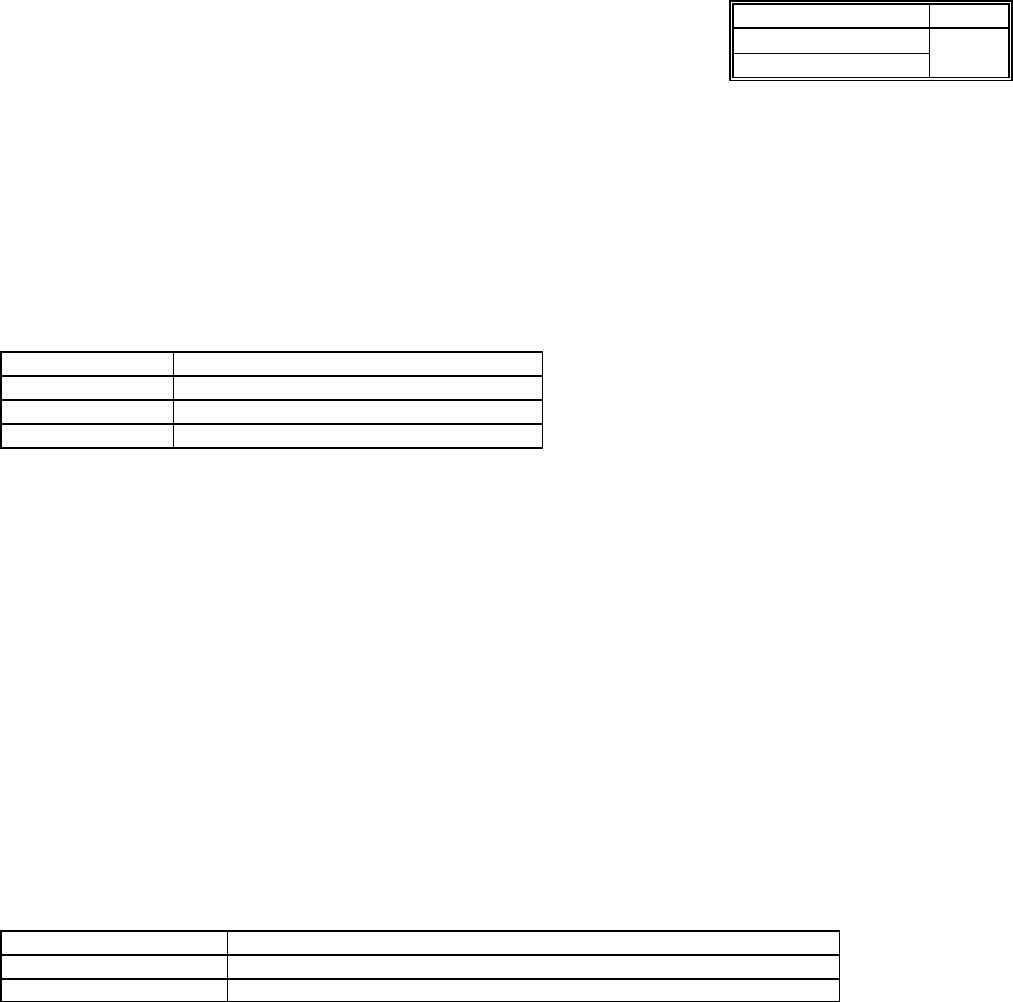
SPECIFICATION REV
497-0426473 B
13 OF 22
3.2.2.2 Non-Operating
3.2.2.2.1 Vibration
The unpacked equipment is to be subjected to a frequency sweep from 3-150-3 Hz with a constant 1.0 g
sinusoidal input (0 to peak) in both the + and - directions along the three mutually perpendicular axis of
the equipment. A dwell time of 15 minutes is to be applied at any frequency on any axis where vigorous or
resonant excitation of the equipment or any parts thereof occurs.
Acceleration 1.0 G
Frequency 3 - 150 - 3 Hz
Sweep time 15 minutes/each axis
Axis 3 axis (X,Y,Z)
Success Criteria: The RBA shall be functional. However, cosmetic failures, such as minor scratches to the
enclosure, can be accepted.
3.2.2.2.2 Shock
The unpacked equipment is to be subjected to three shock pulses in both the + and - direction along the
three mutually perpendicular axis of the equipment (total 18 shocks). The velocity change must equal
4.25 meters per second (167 inches per second). The characteristics of this shock pulse is a triangular
waveform at a 85 g peak occurring in a 10 millisecond timeframe. This shock simulates an approximate
0.92 meters (36 inch) free fall drop onto a tiled concrete floor.
Success Criteria: The RBA shall be functional. However, cosmetic failures, such as minor scratches to the
enclosure, can be accepted.
3.2.2.2.3 Shock Test with Shipping Material (trays, carton Box, etc.)
Test per NCR Packaging Standard 10-001. Success Criteria: The RBA shall be functional.
3.2.2.2.4 ESD Durability (Electro Static Discharge)
Air discharge +/- 8 kV, +/- 10 kV, +/- 15 kV
Horizontal coupling +/- 4 kV, 100 cycles; +/- 6KV, 100 cycles; +/- 10KV, 100 cycles
Vertical coupling +/- 4 kV, 100 cycles; +/- 6KV, 100 cycles; +/- 10KV, 100 cycles
Success Criteria: The RBA shall have no physical and/or functional damage.
3.2.2.3 Contamination
The RBA shall survive modest dust and dirt exposure with no performance degradation.
4. Diagnostics requirements
No diagnostics have been defined.

SPECIFICATION REV
497-0426473 B
14 OF 22
5. Legal and Regulatory Requirements
5.1.1. Safety Requirements
The RBA shall comply with UL60950 and EN/IEC60950.
5.1.2. Disposal Requirements
The RBA shall conform to environmental regulatory requirements, such as disposal of the product and/or
Lithium battery.
5.2 Electromagnetic Compatibility
The RBA shall comply with NCR corporate standards per 497-0412176 and European EMC Directive
89/336/EEC.
5.3 RF Certification
The RBA shall comply with RF certification standards listed in appendix A for the countries listed in
appendix B.
5.4 Human Exposure Limits
The RBA shall comply with the Specific Absorption Rate (SAR) requirements per US FCC OET65 Edition
97-01.

SPECIFICATION REV
497-0426473 B
15 OF 22
6. Marking and Packaging
6.1 Unit Marking
6.1.1. Label and Marking on RBA
A product label shall be adhered to each individual RBA unit. The product label shall be placed on the
recessed area on the back of the enclosure. Material for the label is 0.05mm thick WHITE polyester film
(Modern Plastics Inc. Ltd. “Sun-plate CP-50” or equivalent). The product label shall be legibly and
indelibly marked with the following information:
1. NCR company logo
2. NCR Corporation
3. country of origin
4. class
5. NCR part number
6. lot code or production date
7. FCC/CE certification
8. “crossed out waste basket symbol”
9. patent pending statement (PAT. P)
6.2 Packaging
The carton box shall be labeled according to NCR specifications detailed in NCR Corporate Packaging
Standard B-2 section 2.
6.2.1. Packaging for RBA
Five (5) RBA kits shall be packed in a carton box. There shall be five (5) RBA units per kit. The
manufacturing origin shall be identified on the surface of the carton box. The packaging shall provide
adequate protection to prevent shipping damage to the RBA.

SPECIFICATION REV
497-0426473 B
16 OF 22
7. Quality Assurance Provisions
A supplier who undertakes supplying assemblies to this specification shall be responsible for maintaining
the quality of the assemblies equal to or better than the quality of the originally supplied samples. At the
option of NCR, samples may be pulled from any lot and tested to determine compliance with this
specification. In the event compliance is not satisfactory, units and/or lots may be returned to the supplier
for replacement. The supplier shall pay shipping charges both ways on rejected materials.
7.1 Product Quality
When a purchase order (PO) is accepted to supply material against this specification, the supplier
assumes a responsibility for the shipment of defect-free products produced under a prevention oriented
quality system. NCR expects to receive products at the AQL specified in paragraph 9.5.
To help prevent defective product from reaching the customer, NCR is to be made immediately aware of
any knowledge the supplier has on past and current problems with the product. In the event that
problems with the product do occur, NCR uses a Closed Loop Corrective Action (CLCA) process to
isolate and correct the problems. In general, this process involves a communication to the supplier to
indicate and detail the problem, who will in turn, provide both a short and long term solution to correct the
problem in a timely fashion. Rejections may occur and shipments may be held pending the receipt and
approval of a complete failure analysis and a corrective action report from the vendor to the NCR
Corporation
7.2 Quality Documentation
A detailed description of the manufacturer’s quality program shall be made available to NCR Supplier
Chain Management (SCM). The program content will be confirmed during a facility and process audit at
the manufacturing site if required by SCM.
7.3 Warranty Period
Refer to the business agreement document between NCR and Manufacturing Supplier.

SPECIFICATION REV
497-0426473 B
17 OF 22
8. Product Acceptance
It is the intent of NCR to source materials from suppliers who provide defect-free shipments which require
no routine incoming inspection. Shipments are to be received and accepted through Dock-To-Stock or
Dock-to-Line programs.
8.1 Dock-to-Stock
Dock-to-Stock implementation does not negate the right to reinstate incoming inspection or reject and
return non-conforming material. Reinstatement will have a negative effect on the NCR Business Plan;
immediate supplier corrective action is mandatory.
All lots of items supplied to this specification shall be homogeneous in materials and construction. No lot-
to-lot changes in design or materials involved in the manufacture of product delivered to NCR will be
allowed without written prior approval from NCR.
8.2 Process Change
NCR is to be made aware of all potential materials, design, assembly, and manufacturing site changes
that may cause the product delivered to NCR to not meet specifications. All design and materials
changes must be approved in writing prior to the receipt of production quantities. NCR is to be made
aware of any potential manufacturing site changes; written approval of the change by NCR is not
required. NCR reserves the right to audit and qualify the new location in the event of a manufacturing site
change.
8.3 Quality Performance Records
Quality performance records consisting of inspection and test results shall be maintained by the supplier
in a place and manner which prevents loss or deterioration. They are to be made available to NCR for
audit and analysis. In addition, NCR will provide track supplier quality performance based on the
products they are currently providing to the NCR Corporation. The goal of the report is to the supplier
work towards continual quality improvements by meeting goals set between NCR and the supplier.
8.4 Statistical Process Control (SPC)
The supplier shall be committed to process control and a philosophy of continuous quality improvement.
SPC is a means to achieve each. It is expected that process capability will be demonstrated through SPC
and that it will be used as required to control quality characteristics.
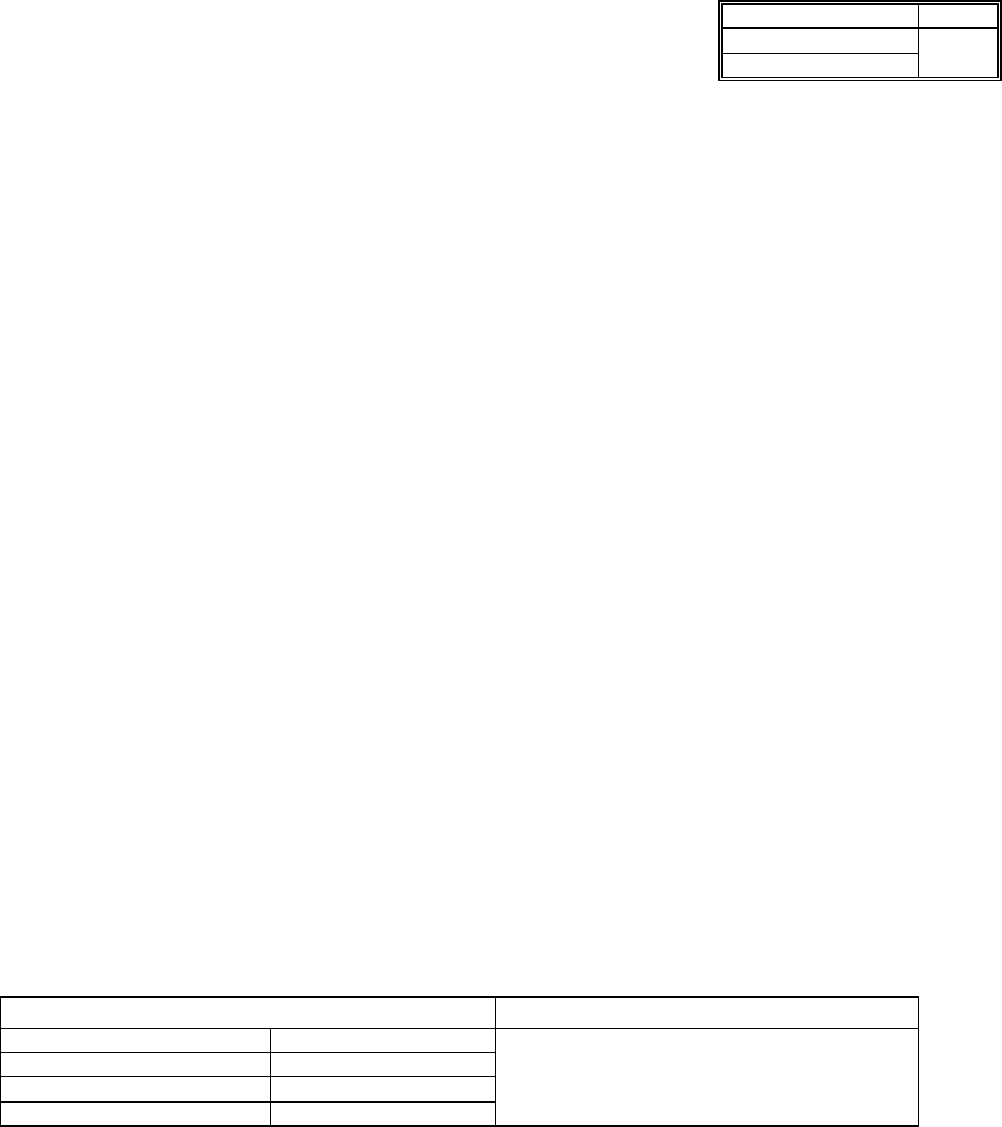
SPECIFICATION REV
497-0426473 B
18 OF 22
8.5 Product AQL (Acceptable Quality Level)
Due to anticipated low volume, AQL is not applicable at this time. AQL will be reevaluated if volume levels
increase significantly.
8.5.1. MTBF
The RBA shall meet an MTBF goal of 500,000 hours whereby the workload is 1000 actuations per day
per Bellcore TR-332.
8.5.2. Definition of Failure
An RBA is considered to be a failed RBA if the RBA experiences one or more problems listed below. A
failed RBA will be excluded from MTBF measurement if the failure is caused by misuse or abuse during
normal operation.
• ESL’s do not respond to RBA commands when RBA is located within specified range of ESL (Battery
OK)
• Push Switch does not work
• Enclosure is cracked and/or broken
• Excessive power consumption
8.6 Quality Goal
The supplier is requested to make continuous quality improvements to the RBA until the quality targets
below are achieved.
Out-of-box Quality Goal Reliability Goal
Factory Out of Box 50 DPM
Shipping & Handling 50 DPM
All Others 50 DPM
Total 150 DPM
0.5 million hours MTBF
DPM = devices per million

SPECIFICATION REV
497-0426473 B
19 OF 22
9. Engineering Change Provisions
9.1 General
Any changes affecting manufactured or purchased parts, firmware programming, purchased equipment
performance, maintenance, interchangeability, spare parts, or other pre-established routines and
procedures of the physical assembly involving the product delivered to NCR must receive NCR’s written
approval prior to incorporation.
9.2 Request From Supplier
A request for approval will be submitted to NCR accompanied by evaluation samples where applicable.
NCR will respond within 60 days; however, no changes are to be made on products delivered to NCR
without NCR approval.
9.3 Approval
The NCR representative will analyze the change requested and give written approval or disapproval.
9.4 NCR Changes
Changes originating from NCR will be communicated to the supplier through NCR’s representative. If
NCR suggests changes to the supplier with respect to modifications of any product, unit, or part thereof,
the supplier shall study each suggested change and, within a reasonable time, not to exceed 60 days,
report to NCR as to the feasibility, price, modifications to the change, and the estimated time or serial
number of the product on which such change can be implemented. Such change shall not be made by
the supplier until official approval has been granted by NCR.
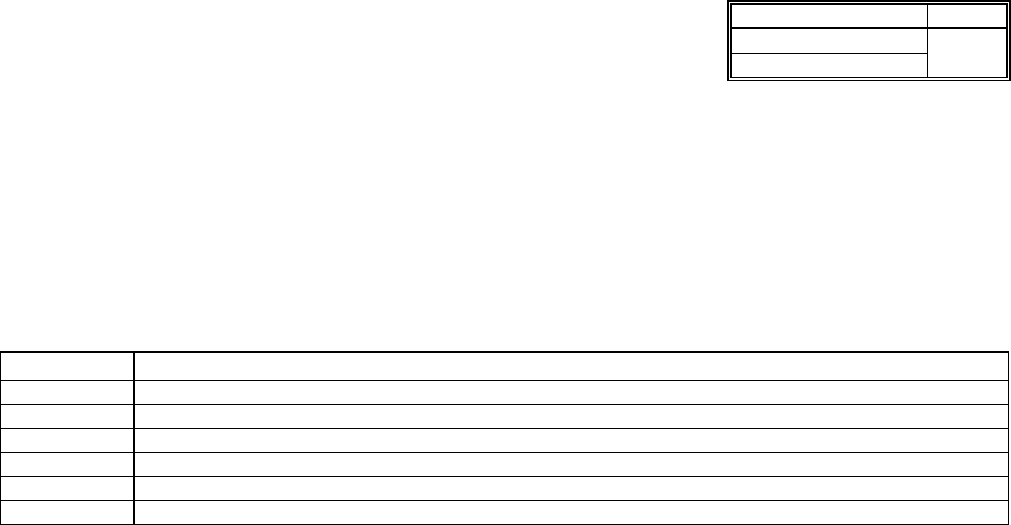
SPECIFICATION REV
497-0426473 B
20 OF 22
10. Design Qualification Test Requirements
The manufacturing supplier is responsible for the electrical and mechanical design and shall pursue
ultimate design-for-manufacturing. The manufacturing supplier should take responsibility for conducting
its Design Qualification Test and should report its results to NCR for approval prior to RBA mass
production.
NCR’s preference for the Design Qualification Test items that should be done by the manufacturing
supplier is as follows. Items below are subject to negotiation between the manufacturing supplier and
NCR when the manufacturing supplier does not have the capability to perform the test(s).
Par. Description
3.1.2 Operation
3.1.3 Transmitter
3.1.7.2 Battery Life
3.1.8 Environmental Test Requirements – Temperature & Humidity
3.1.9 Environmental Test Requirements – Shipping

SPECIFICATION REV
497-0426473 B
21 OF 22
Appendix A: Regulatory Requirements
Product Description
• Hand-held device that activates specific displays of the NCR 7730 series ESLs
• Operating frequency is within 2.4 and 2.4835GHz and operates on a single frequency.
• Output power is 10mW EIRP (Equivalent Isotropically Radiated Power).
• Antenna is located within 20cm of the user.
Compliance with Radio and Telecommunication Terminal Equipment (R&TTE) Directive
• EN 55022 Class A Electromagnetic Interference (EMI) compliance
• EN 300 328 Radio Standard
• EN 301 489-17 Electromagnetic Compatibility (EMC) Standard
• EN 60950 Safety Standard
• Assembly of TCF and submittal to Notified Body*
• Issuance of Statement of Opinion by Notified Body*
• Notification to 19 EU/EFTA countries.
• Currently no published RF exposure standards exist and compliance is not required. This will change
soon.
*Not required however it is highly suggested to ease the Notification Process. Some countries,
particularly Belgium, have stepped up enforcement of the R&TTE Directive. The lack of
Notified Body involvement can cause problems.
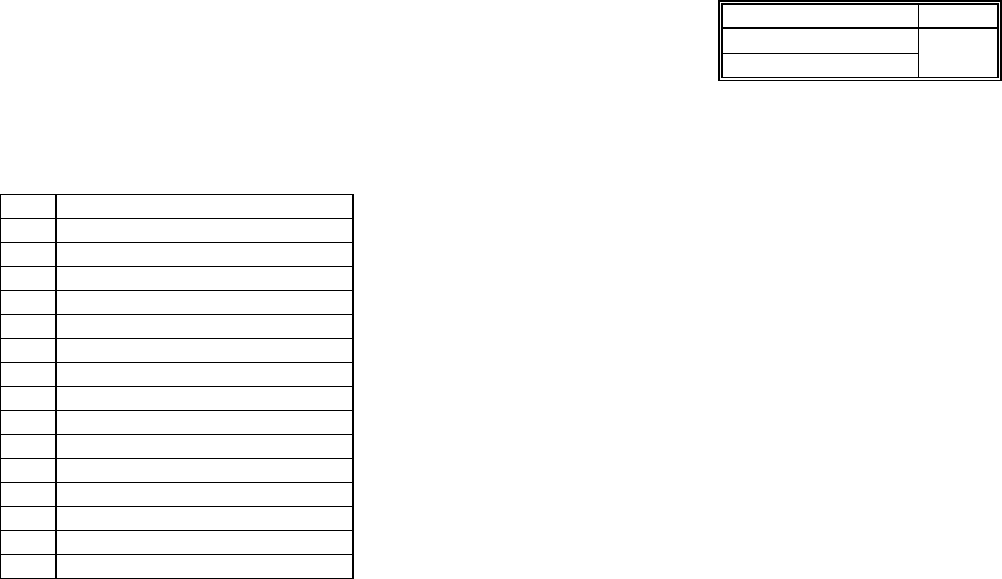
SPECIFICATION REV
497-0426473 B
22 OF 22
Appendix B: List of Countries for RBA Deployment
EUROPE
Country
1.
Austria
2.
Belgium
3.
Denmark
4.
Finland
5.
France
6.
Germany
7.
Greece
8.
Ireland
9.
Italy
10.
Luxembourg
11.
Netherlands
12.
Portugal
13.
Spain
14.
Sweden
15.
England (UK)

G:\Elite Home Directory\Job Folders\job32286 NCR Corporation RSD-Atlanta\Ex D\RBA
RegulatoryComplianceStatements.doc
Radio Frequency Interference Statements
Federal Communications Commission (FCC)
Information to User
This equipment has been tested and found to comply with the limits for a Class A digital device,
pursuant to Part 15 of FCC Rules. These limits are designed to provide reasonable protection
against harmful interference when the equipment is operated in a commercial environment. This
equipment generates, uses, and can radiate radio frequency energy and, if not installed and used in
accordance with the instruction manual, may cause harmful interference to radio communications.
Operation of this equipment in a residential area is likely to cause interference in which case the
user will be required to correct the interference at his own expense.
NCR is not responsible for any radio or television interference caused by unauthorized modification
of this equipment or the substitution or attachment of connecting cables and equipment other than
those specified by NCR. The correction of interference caused by such unauthorized modification,
substitution or attachment will be the responsibility of the user. The user is cautioned that changes
or modifications not expressly approved by NCR may void the user’s authority to operate the
equipment.
FCC Label Statement
This device complies with Part 15 of the FCC Rules. Operation is subject to the following two
conditions: (1) this device may not cause harmful interference, and (2) this device must accept
any interference received, including interference that may cause undesired operation
Canadian Department of Communications
This digital apparatus does not exceed the Class A limits for radio noise emissions from digital
apparatus set out in the Radio Interference Regulations of the Canadian Department of
Communications.
Le présent appareil numérique n’émet pas de bruits radioélectriques dépassant les limites
applicables aux appareils numériques de la classe A prescrites dans le Règlement sur le brouillage
radioélectriques édicté par le ministrère des Communications du Canada.
Canadian Label Statement
This Class A digital apparatus complies with Canadian ICES-003
Cet appareil numerique de la classe A est conforme a la norme NMB-003 du Canada
International Radio Frequency Interference Statement
Warning: This is a Class A product. In a domestic environment this product may cause radio
interference, in which case the user may be required to take adequate measures.
LITHIUM BATTERY WARNING
CAUTION: Danger of explosion if battery is incorrectly replaced. Replace only with the same
orequivalent type recommended by the Manufacturer. Discard used batteries according to the
manufacturer's
Instructions"
"ATTENTION: Il y a danger d'explosion s'il y a remplacement incorrect de la batterie. Remplacer
uniquement avec une batterie du même type ou d'un type recommandé par le constructeur. Mettre
au rébut les batteries usagées conformément aux instructions du fabricant".
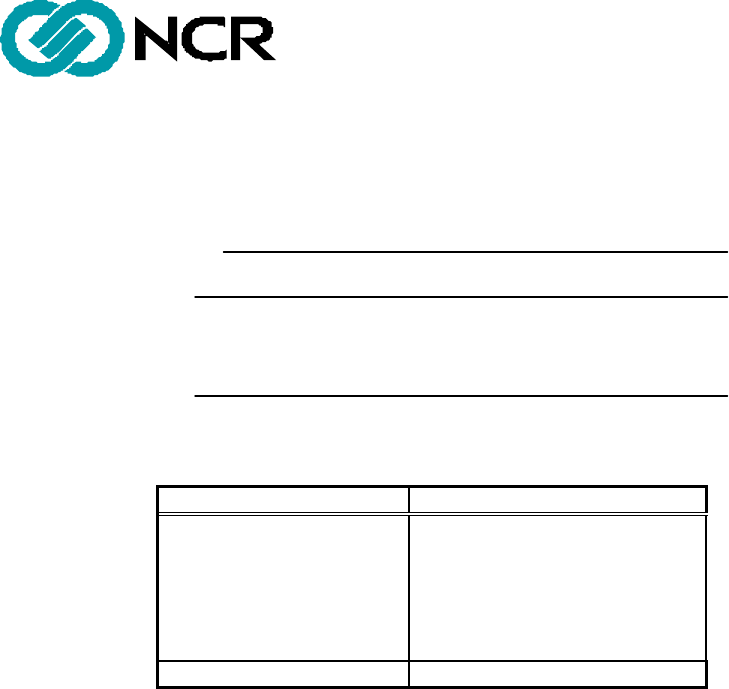
G:\Elite Home Directory\Job Folders\job32286 NCR Corporation RSD-Atlanta\Ex D\RBA
RegulatoryComplianceStatements.doc
Battery Disposal (Switzerland)
Refer to Annex 4.10 of SR814.013 for battery disposal
DECLARATION OF CONFORMITY
We, NCR Corporation, Retail Solutions Division – Atlanta
2651 Satellite Blvd., Duluth, Georgia 30096-5810
declare under our sole responsibility that the product
Class 7730 - K070 Remote Button Activator
to which this declaration relates is in conformity with the following standard(s) or
other normative document(s) following the provisions of the noted Directives.
EU Directive Harmonized Standard (s)
89/336/EEC (EMC) Amended
by 91/263/EEC 92/31/EEC,
93/68/EEC 93/97/EEC
1995/5/EC (R&TTE)
ETSI EN 300 440
ETSI EN 301 489
EN 55022
EN 61000-4-2
EN 61000-4-3
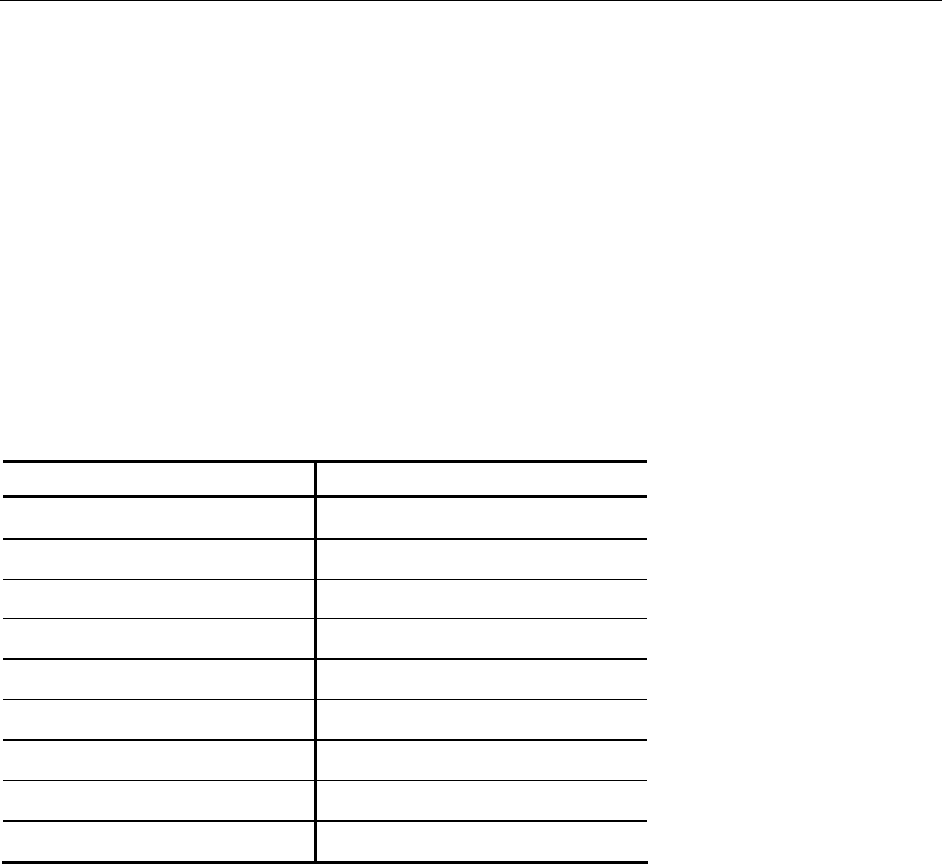
Chapter 11: Remote Button Activator (RBA)
Overview
The Remote Button Activator (RBA) offers an easy method to check the contents of an ESL’s
registers. In a store environment, the RBA can be used to access promotional messaging,
stocking information, planogram data, or other store-specific information stored in the ESL’s
registers.
The RBA device is similar to an automotive car door lock system or garage door opener system
in both size and method of operation.
2. Using the Remote Button Activator (RBA)
Place the RBA near an ESL. Press the buttons on the RBA in the sequences listed below and the
contents of the selected ESL register displays.
Button Display Register Button Display Register
1 16 A-1 1
2 15 A-2 2
3 14 A-3 3
4 13 A-4 4
5 12 A-5 5
6 11 A-6 6
7 10 A-7 7
8 9 A-8 no action
9 8 A-9 no action
Alternate functions can also be activated by first pressing the A key and then button 1 through
9.
When the A key is pressed, the LED turns on a little less brightly than normal to indicate
alternate mode. Within 5 seconds a number must be entered or the RBA turns off the LED and
defaults back to normal mode.
There are two ways to use the RBA to view the contents of an ESL’s registers:
1. Press and release the RBA button.
This shows the contents of the selected ESL register on the ESL LCD. After a few seconds, the
ESL LCD redisplays the contents of the original register.

Chapter 11: Remote Button Activator (RBA) B-2
2. Press and hold down the RBA button.
This shows the contents of the selected ESL register on the ESL LCD. The LED light on the RBA
blinks eight (8) times while the button is pressed. After approximately 15 seconds, the ESL LCD
redisplays the contents of the original register and the LED stops blinking.
Note: Each RBA is configured for use in a specific store and does not work on a RealPrice
System in another store.
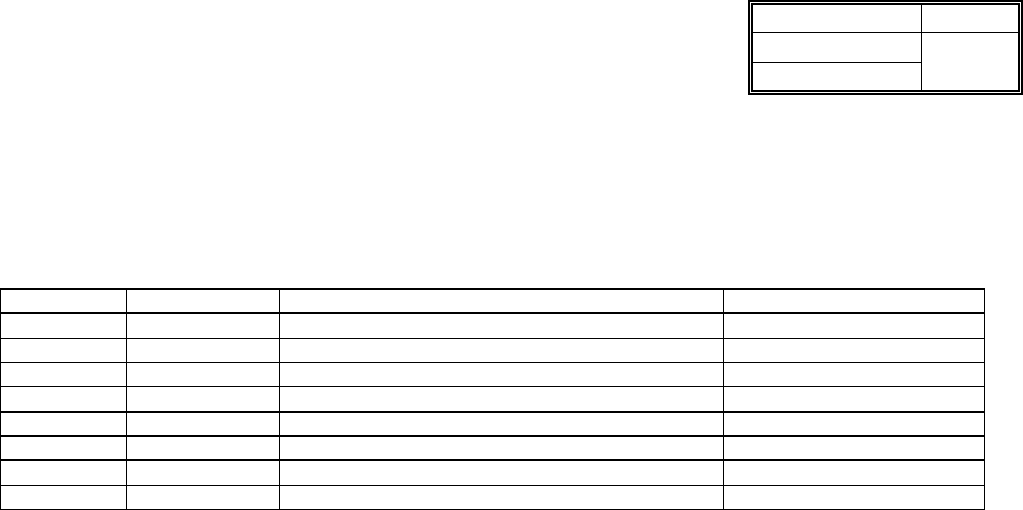
NCR Corporation SPECIFICATION
REV
497-0430074 A
PROCUREMENT SPECIFICATION 2 OF 22
NCR Corporation
RSG Atlanta
Document Change Sheet
Revision Date Description of Change Change Reason
A 03/07/2003 Original

SPECIFICATION REV
497-0430074 A
3 OF 22
Table of Contents
1. SCOPE....................................................................................................................................6
2. ASSOCIATED DOCUMENTS.............................................................................................6
2.1 NCR Reference Documents.......................................................................................................................................6
2.2 Priority of Documents.................................................................................................................................................6
3. REQUIREMENTS..................................................................................................................7
3.1 Functional Requirements...........................................................................................................................................7
3.1.1. General.................................................................................................................................................................... 7
3.1.2. Operation ................................................................................................................................................................ 7
3.1.2.1 Single -Shot Mode............................................................................................................................................. 7
3.1.2.2 Repetitive Mode................................................................................................................................................ 8
3.1.2.3 Security Code Programming........................................................................................................................... 9
3.1.3. Transmitter ............................................................................................................................................................. 9
3.1.3.1 Operating Distance........................................................................................................................................... 9
3.1.3.2 Transmit Frequency.......................................................................................................................................... 9
3.1.3.3 Transmit Power................................................................................................................................................. 9
3.1.3.4 RF Modulation ................................................................................................................................................ 10
3.1.3.5 Transmit Data Rate......................................................................................................................................... 10
3.1.3.6 Transmit Data Duration ................................................................................................................................. 10
3.1.3.7 Message Format .............................................................................................................................................. 10
3.1.4. Antenna................................................................................................................................................................. 10
3.1.5. Enclosure (see figures below) ........................................................................................................................... 10
3.1.6. Keypad.................................................................................................................................................................. 11
3.1.7. Battery ................................................................................................................................................................... 11
3.1.7.1 Battery Model.................................................................................................................................................. 11
3.1.7.2 Battery Life ...................................................................................................................................................... 11
3.1.7.3 Battery replacement........................................................................................................................................ 11
3.2 Environment Test Requirements...........................................................................................................................12
3.2.1. Temperature & Humidity................................................................................................................................... 12
3.2.1.1 Operating.......................................................................................................................................................... 12
3.2.1.2 Non-Operating................................................................................................................................................. 12
3.2.2. Shock and Vibration ........................................................................................................................................... 12
3.2.2.1 Operating.......................................................................................................................................................... 12
3.2.2.2 Non-Operating................................................................................................................................................. 13
3.2.2.3 Contamination ................................................................................................................................................. 13
4. DIAGNOSTICS REQUIREMENTS...................................................................................13
5. LEGAL AND REGULATORY REQUIREMENTS..........................................................14
5.1.1. Safety Requirements........................................................................................................................................... 14
5.1.2. Disposal Requirements....................................................................................................................................... 14
5.2 Electromagnetic Compatibility ..............................................................................................................................14

SPECIFICATION REV
497-0430074 A
4 OF 22
5.3 RF Certification..........................................................................................................................................................14
5.4 Human Exposure Limits..........................................................................................................................................14
6. MARKING AND PACKAGING .........................................................................................15
6.1 Unit Marking...............................................................................................................................................................15
6.1.1. Label and Marking on RBA .............................................................................................................................. 15
6.2 Packaging .....................................................................................................................................................................15
6.2.1. Packaging for RBA ............................................................................................................................................. 15
7. QUALITY ASSURANCE PROVISIONS..........................................................................16
7.1 Product Quality ..........................................................................................................................................................16
7.2 Quality Documentation............................................................................................................................................16
7.3 Warranty Period........................................................................................................................................................16
8. PRODUCT ACCEPTANCE...............................................................................................17
8.1 Dock-to-Stock..............................................................................................................................................................17
8.2 Process Change...........................................................................................................................................................17
8.3 Quality Performance Records ................................................................................................................................17
8.4 Statistical Process Control (SPC)..........................................................................................................................17
8.5 Product AQL (Acceptable Quality Level)...........................................................................................................18
8.5.1. MTBF .................................................................................................................................................................... 18
8.5.2. Definition of Failure ........................................................................................................................................... 18
8.6 Quality Goal ................................................................................................................................................................18
9. ENGINEERING CHANGE PROVISIONS.......................................................................19
9.1 General..........................................................................................................................................................................19
9.2 Request From Supplier.............................................................................................................................................19
9.3 Approval .......................................................................................................................................................................19
9.4 NCR Changes..............................................................................................................................................................19
10. DESIGN QUALIFICATION TEST REQUIREMENTS................................................20
APPENDIX A: REGULATORY REQUIREMENTS..............................................................21

SPECIFICATION REV
497-0430074 A
5 OF 22
APPENDIX B: LIST OF COUNTRIES FOR RBA DEPLOYMENT ...................................22
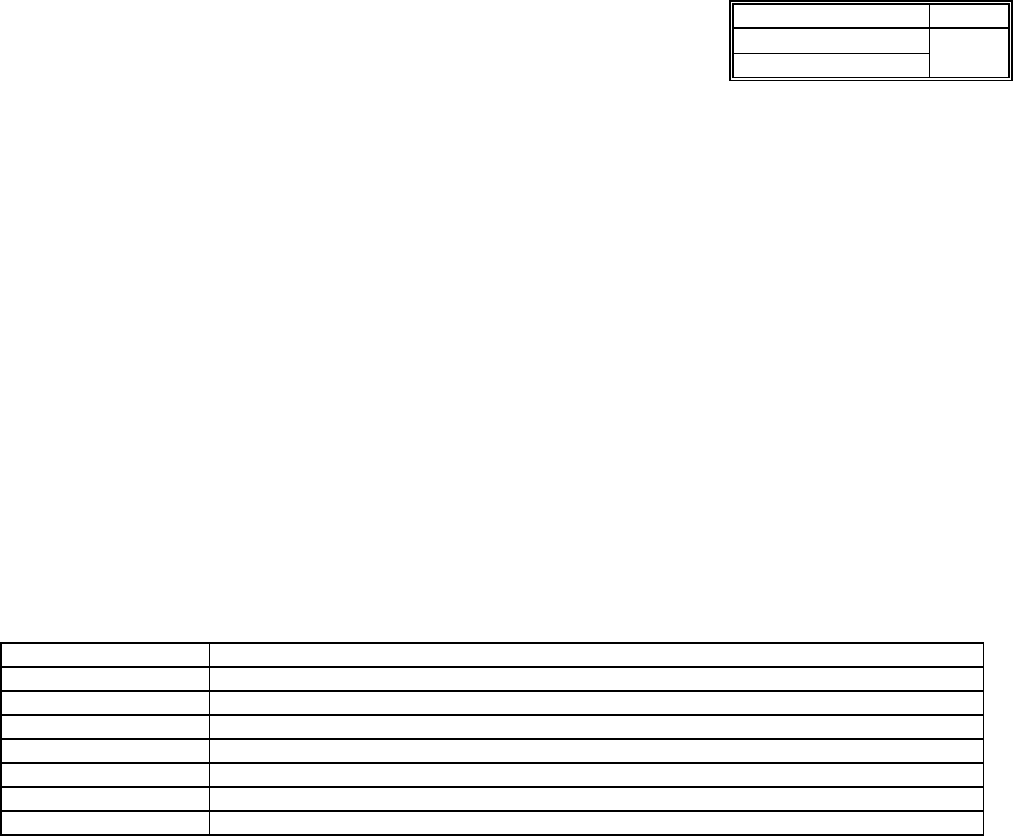
SPECIFICATION REV
497-0430074 A
6 OF 22
1. Scope
The requirements for the 7730 Remote Button Activator, herein referred to as the RBA, are specified in
this procurement specification.
The RBA shall function as a remote display sequence activator for NCR Electronic Shelf Labels (ESL).
The RBA is intended for use in the countries listed in Appendix B.
The RBA shall meet the following objectives:
• Small and Light
• Robust design
• 10 buttons
• Long battery life with replaceable battery
• Key chain or belt attachment
2. Associated Documents
2.1 NCR Reference Documents
497- 0424649 DecisioNet/RealPrice RBA Product Requirements
230-0415412 NCR-7730 DecisioNet Functional Specification (3.0 Air Interface and Protocol)
497-0412176 Regulator Compliance Guidelines
89/336/EEC EMC Directive
UL60950
EN/IEC06950
NCR Corporate Packaging Standard B-2, Section B2
NCR Packaging Standard 10-001
2.2 Priority of Documents
In the event of conflict between documents, the priority shall be as follows:
• Procurement Specification
• Business Agreement between NCR and Manufacturing Supplier
• Other applicable documents and drawings
• Purchase Order
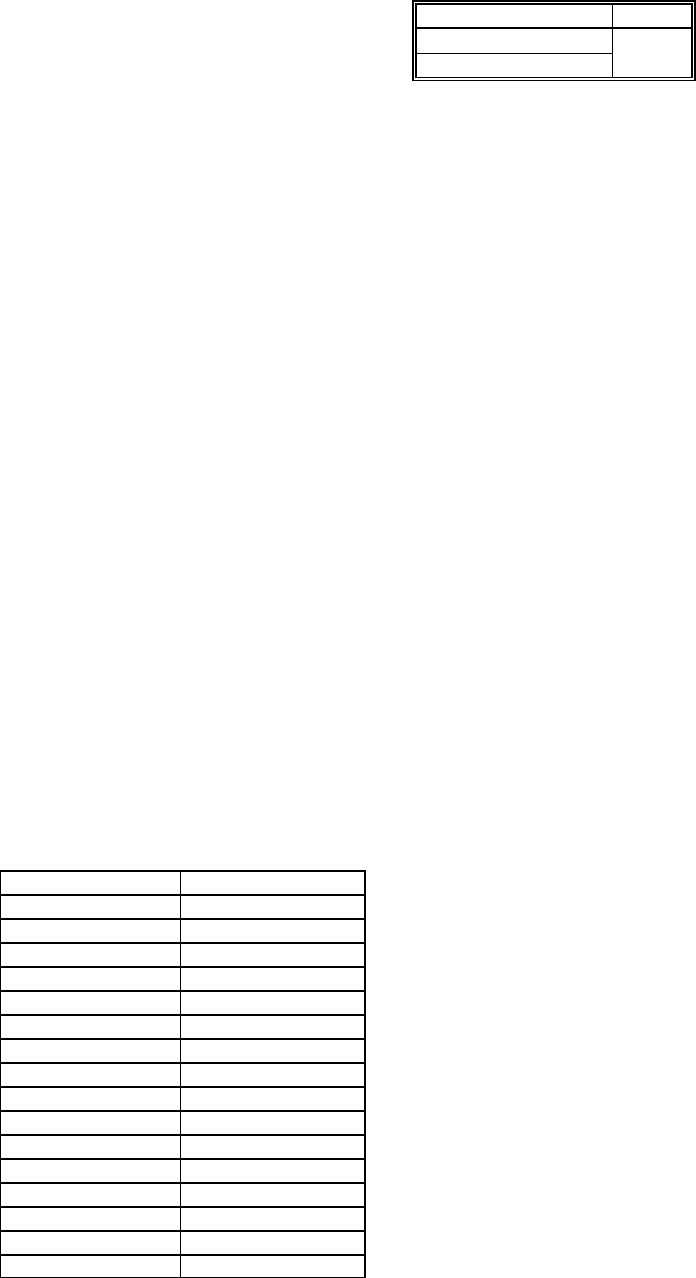
SPECIFICATION REV
497-0430074 A
7 OF 22
3. Requirements
3.1 Functional Requirements
3.1.1. General
1. The RBA shall consist of a ten button Radio Frequency (RF) transmitter device designed to send
commands to RealPrice electronic shelf labels (ESL).
2. The RBA shall communicate with ESLs using the High Signal Input Communication Mode as
specified in 230-0415412.
3.1.2. Operation
3.1.2.1 Single-Shot Mode
1. Each key press lasting between 0.5 and 1.873 seconds shall result in a “single-shot” mode operation
as described below:
(a) Program the 4th Sequence Register with 128 bits of information. Only one
display register shall be programmed with FFh; all others shall be
programmed with 00h. The display register programmed with FFh is
dependent on which button(s) is pressed per the following table:
Button Display Register
1 16
2 15
3 14
4 13
5 12
6 11
7 10
8 9
9 8
Alt followed by 1 1
Alt followed by 2 2
Alt followed by 3 3
Alt followed by 4 4
Alt followed by 5 5
Alt followed by 6 6
Alt followed by 7 7
(b) Select the 4th Sequence Register for display.
(c) Send the Switch Activation command.
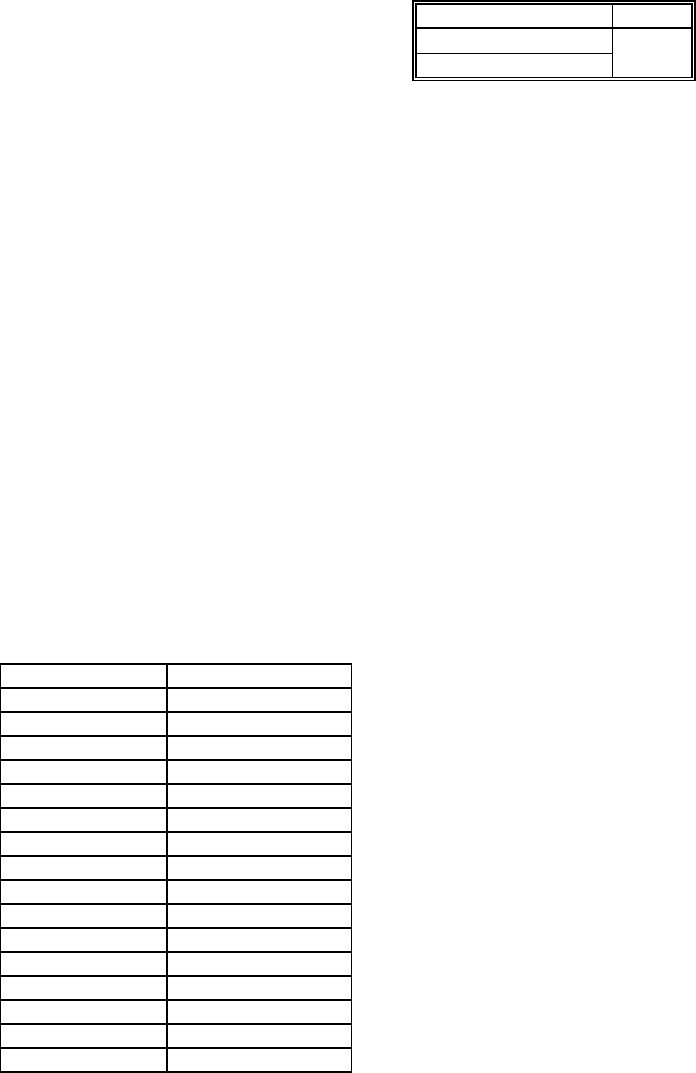
SPECIFICATION REV
497-0430074 A
8 OF 22
(d) The sequence (a, b, c) defined above shall be chained and sent as a single
transmit burst.
(e) The Alt key function shall remain in effect for no more than 5 seconds (the
operator has 5 seconds to select a button after pressing the Alt key.) The Alt
function is terminated at the end Alt + # command sequence.
2. Simultaneous activation of two or more buttons shall not result in commands, other than those listed
above, being sent to the ESL.
3.1.2.2 Repetitive Mode
1. Each numbered key press lasting longer than 1.873 seconds shall result in a repetitive mode
operation as described below:
(a) Program the 4th Sequence Register with 128 bits of information. Only 1
display register shall be programmed with FFh; all others shall be
programmed with 00h. The display register programmed with FFh is
dependent on which button is pressed per the following table:
Button Display Register
1 16
2 15
3 14
4 13
5 12
6 11
7 10
8 9
9 8
Alt 1 1
Alt 2 2
Alt 3 3
Alt 4 4
Alt 5 5
Alt 6 6
Alt 7 7
(b) Select the 4th Sequence Register for display
(c) Send the Switch Activation command.
(d) When a numbered button is held down for more than 1.873 second, the entire
sequence (a, b, c) shall be sent repetitively every 1.873 seconds. To conserve
battery life, the maximum transmit time shall be limited to 8 repetitions.
(e) The sequence (a, b, c) defined above shall be sent as a single concatenated
transmit burst..

SPECIFICATION REV
497-0430074 A
9 OF 22
(f) The Alt key function shall remain in effect for no more than 5 seconds (the
operator has 5 seconds to select a button after pressing the Alt key.) The Alt
function is terminated at the end Alt + # command sequence.
2. Simultaneous activation of two or more buttons shall not result in commands, other than those listed
above, being sent to the ESL.
3.1.2.3 Security Code Programming
The RBA shall have a programming mode whereby the operator shall be able to input, via the keypad, a
three-digit store ID code. Valid store ID codes are 000 to 203 and 205 to 255. ID 255 is the factory
programmed default for ESLs and RBA. ID 204 is reserved for broadcast messages and can not be
programmed.
The code shall be stored in non-volatile memory. Battery removal shall not require the reprogramming of
the store ID code.
The following procedure shall be followed to re-program the codes:
• Press and hold buttons 5 and 6 simultaneously (> 5 seconds) until the RBA indicates that
programming mode is entered with three short flashes of the LED.
• Enter the three digits for to program the store ID. The Alt button enters a “0”.
• After the third digit is entered the RBA will indicate the programming was successful with three short
flashes of the LED or that programming failed with one long pulse.
The store ID code shall be sent with every command sequence as defined in 230-0415412.
3.1.3. Transmitter
3.1.3.1 Operating Distance
The operating distance is measured from the front (LED side) of the RBA housing to the surface of the
ESL display with the RBA perpendicular to the ESL surface and the bottom of the ESL and RBA both
aligned horizontally.
The RBA shall be able to activate a display change on an ESL with a nominal sensitivity rating of -10
dBm at a minimum distance of 2 inches.
The RBA shall not be able to activate a display change on an ESL with a nominal sensitivity rating of -10
dBm at a distance of over 12 inches.
3.1.3.2 Transmit Frequency
The transmit frequency shall be 2.443 GHz +/- 2% (center of ISM band), including initial tolerance and
drift of the RF Transceiver. The RF transmitter shall be designed to operate in the ISM band at 2.400 GHz
to 2.4835 GHz. The transmitter circuit shall not require any adjustments during production nor shall any
adjustments be required in store environments.
3.1.3.3 Transmit Power
The transmitter power shall be –1.5 dBm EIRP maximum.
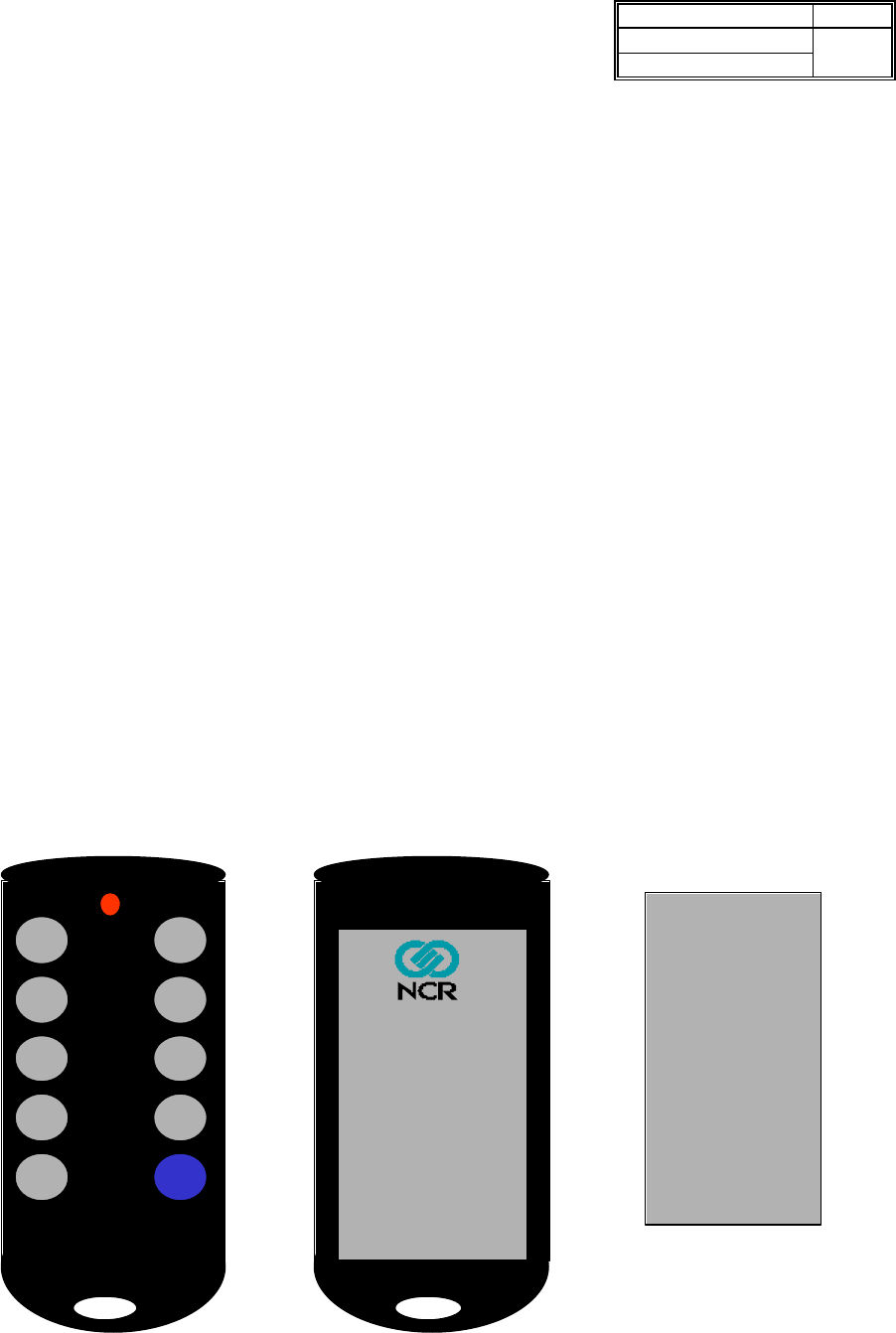
SPECIFICATION REV
497-0430074 A
10 OF 22
3.1.3.4 RF Modulation
The RF modulation shall be On-Off-Keying (OOK) amplitude modulation with a minimum 20dB
modulation depth.
3.1.3.5 Transmit Data Rate
The transmit data rate shall be 16.384 Kbits/sec.
3.1.3.6 Transmit Data Duration
Each key press shall initiate a command sequence per 3.1.2 that includes communication protocol data
as specified in 230-0415412.
3.1.3.7 Message Format
The message format for the RBA transmission shall be as specified in 230-0415412.
3.1.4. Antenna
The antenna shall be completely contained within the enclosure.
3.1.5. Enclosure (see figures below)
1 - Inventory
2 - Facings
3 - Shelf #
4 - Aisle #
5 - Next del
6 - Last del
7 - Promo type
8 - A
9 - B
Alt 1 - C
Alt 2 - D
Alt 3 - E
Alt 4 - F
Alt 5 - G
Alt 6 - H
Alt 7 - I
FCC xxxxxxx
CE xxxxxxxx
xxxxxxxxxxxx
Place Display
Key Here
1 6
2 7
3 8
4 9
5
RealPrice
ALT

SPECIFICATION REV
497-0430074 A
11 OF 22
1. Preferably, a standard off-the-shelf 10-button enclosure will be used for the RBA. This
enclosure shall be designed specifically for RF transmitter applications. The enclosure
shall have the approximate dimensions shown below:
(a) Length: 3.5 inches
(b) Width: 1.5 inches
(c) Depth: 0.625 inch max.
2. The back of the enclosure shall include a recessed area for two labels. One label shall be
used to display permanent information such as part number, FCC certification, etc. per
6.1.1. The other label shall be for a customer applied/replaceable keypad legend.
3. The enclosure shall accommodate a standard user replaceable coin cell battery.
4. The enclosure shall be black.
5. The enclosure shall not have exposed metal parts.
6. The enclosure shall have a provision for securely attaching a key ring.
7. No special tools shall be required to replace the battery.
3.1.6. Keypad
• The keypad shall be a ten-button, rubber membrane keypad with carbon puck contacts.
• The contact patterns shall be plated or protected to provide corrosion resistance and longer life.
• Each of the ten buttons shall provide tactile feedback to the operator.
• Key designations shall be legible for the life of the keypad.
• The keypad shall be skin oil, cleaning agent, and hand lotion resistant.
• Each of the ten buttons shall have an actuation force of 155 +/- 20 grams.
• Each of the ten buttons shall have a contact force of 80 +/- 20 grams.
3.1.7. Battery
3.1.7.1 Battery Model
The RBA shall be powered by CR2032, 20mm diameter, 3 Volt, 220 mAh, lithium coin cells.
3.1.7.2 Battery Life
The operating life of the battery shall provide for a minimum of 1.3 million single-shot mode (section
3.1.2.1) operations.
3.1.7.3 Battery replacement
The Batteries shall be replaceable. Opening the RBA cabinet to replace the batteries is and acceptable
solution.

SPECIFICATION REV
497-0430074 A
12 OF 22
3.2 Environment Test Requirements
3.2.1. Temperature & Humidity
3.2.1.1 Operating
Operating temperature and humidity testing per NCR standard procedures is not applicable. This is hand-
held device that can not operate stand-alone and is intended for use in a conditioned environment.
3.2.1.2 Non-Operating
3.2.1.2.1 Storage
Min. Max. Note
Period of Storage Range - 3 months
Temperature Range (Dry Bulb) 10 o C +50 o C
Temperature Change - 15 o C/Hr.
Relative Humidity Range 10 % 90 % No condensation
Barometric Pressure 70x103 Pa 105x103 Pa A maximum of 2,000
meter altitude
3.2.1.2.2 Shipping
Min. Max. Note
Period of Storage Range - 3 months
Temperature Range (Dry Bulb) -40 o C +60 o C
Temperature Change - 15 o C/Hr.
Relative Humidity Range 5 % 95 % No condensation
Barometric Pressure 70x103 Pa 105x103 Pa A maximum of 2,000
meter altitude
3.2.2. Shock and Vibration
3.2.2.1 Operating
Operating temperature and humidity testing per NCR standard procedures is not applicable. This is hand-
held device that can not operate stand-alone and is intended for use in a conditioned environment.
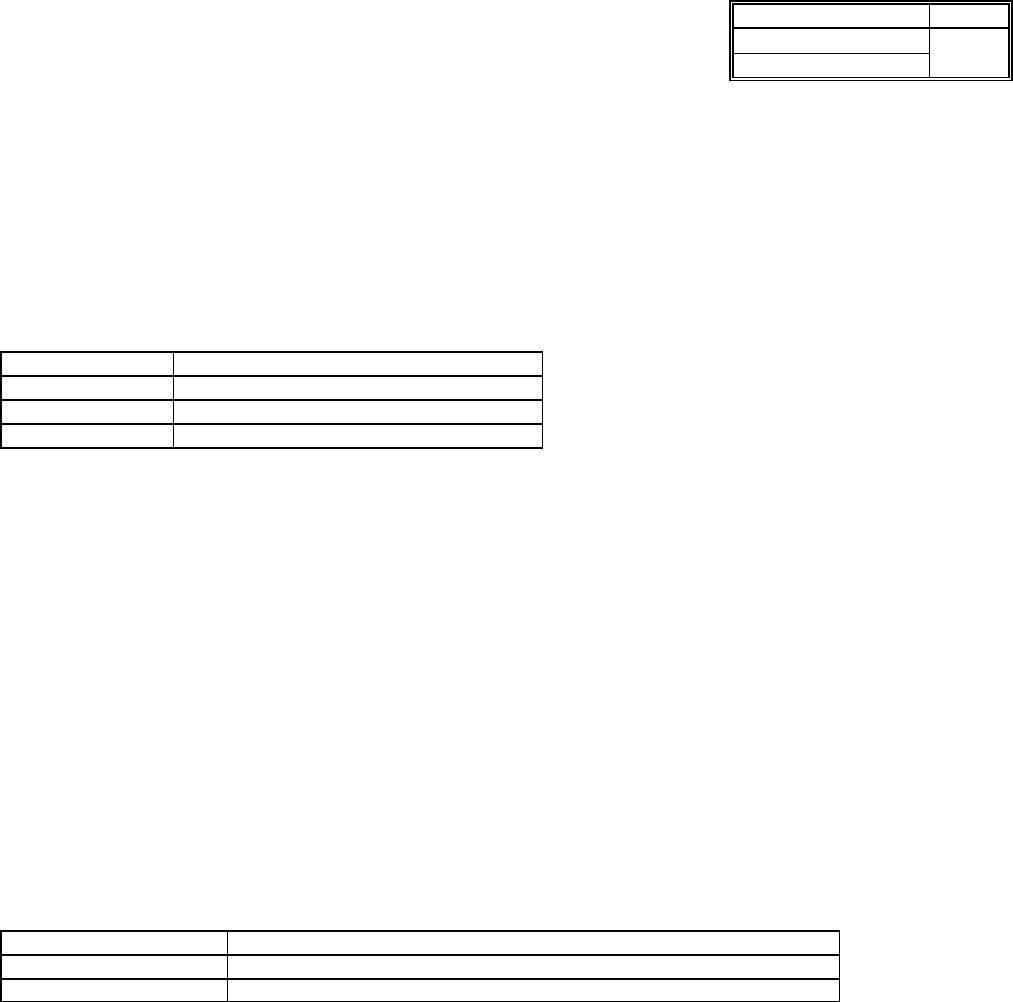
SPECIFICATION REV
497-0430074 A
13 OF 22
3.2.2.2 Non-Operating
3.2.2.2.1 Vibration
The unpacked equipment is to be subjected to a frequency sweep from 3-150-3 Hz with a constant 1.0 g
sinusoidal input (0 to peak) in both the + and - directions along the three mutually perpendicular axis of
the equipment. A dwell time of 15 minutes is to be applied at any frequency on any axis where vigorous or
resonant excitation of the equipment or any parts thereof occurs.
Acceleration 1.0 G
Frequency 3 - 150 - 3 Hz
Sweep time 15 minutes/each axis
Axis 3 axis (X,Y,Z)
Success Criteria: The RBA shall be functional. However, cosmetic failures, such as minor scratches to the
enclosure, can be accepted.
3.2.2.2.2 Shock
The unpacked equipment is to be subjected to three shock pulses in both the + and - direction along the
three mutually perpendicular axis of the equipment (total 18 shocks). The velocity change must equal
4.25 meters per second (167 inches per second). The characteristics of this shock pulse is a triangular
waveform at a 85 g peak occurring in a 10 millisecond timeframe. This shock simulates an approximate
0.92 meters (36 inch) free fall drop onto a tiled concrete floor.
Success Criteria: The RBA shall be functional. However, cosmetic failures, such as minor scratches to the
enclosure, can be accepted.
3.2.2.2.3 Shock Test with Shipping Material (trays, carton Box, etc.)
Test per NCR Packaging Standard 10-001. Success Criteria: The RBA shall be functional.
3.2.2.2.4 ESD Durability (Electro Static Discharge)
Air discharge +/- 8 kV, +/- 10 kV, +/- 15 kV
Horizontal coupling +/- 4 kV, 100 cycles; +/- 6KV, 100 cycles; +/- 10KV, 100 cycles
Vertical coupling +/- 4 kV, 100 cycles; +/- 6KV, 100 cycles; +/- 10KV, 100 cycles
Success Criteria: The RBA shall have no physical and/or functional damage.
3.2.2.3 Contamination
The RBA shall survive modest dust and dirt exposure with no performance degradation.
4. Diagnostics requirements
No diagnostics have been defined.

SPECIFICATION REV
497-0430074 A
14 OF 22
5. Legal and Regulatory Requirements
5.1.1. Safety Requirements
The RBA shall comply with UL60950 and EN/IEC60950.
5.1.2. Disposal Requirements
The RBA shall conform to environmental regulatory requirements, such as disposal of the product and/or
Lithium battery.
5.2 Electromagnetic Compatibility
The RBA shall comply with NCR corporate standards per 497-0412176 and European EMC Directive
89/336/EEC.
5.3 RF Certification
The RBA shall comply with RF certification standards listed in appendix A for the countries listed in
appendix B.
5.4 Human Exposure Limits
The RBA shall comply with the Specific Absorption Rate (SAR) requirements per US FCC OET65 Edition
97-01.

SPECIFICATION REV
497-0430074 A
15 OF 22
6. Marking and Packaging
6.1 Unit Marking
6.1.1. Label and Marking on RBA
A product label shall be adhered to each individual RBA unit. The product label shall be placed on the
recessed area on the back of the enclosure. Material for the label is 0.05mm thick WHITE polyester film
(Modern Plastics Inc. Ltd. “Sun-plate CP-50” or equivalent). The product label shall be legibly and
indelibly marked with the following information:
1. NCR company logo
2. NCR Corporation
3. country of origin
4. class
5. NCR part number
6. lot code or production date
7. FCC/CE certification
8. “crossed out waste basket symbol”
9. patent pending statement (PAT. P)
6.2 Packaging
The carton box shall be labeled according to NCR specifications detailed in NCR Corporate Packaging
Standard B-2 section 2.
6.2.1. Packaging for RBA
Five (5) RBA kits shall be packed in a carton box. There shall be five (5) RBA units per kit. The
manufacturing origin shall be identified on the surface of the carton box. The packaging shall provide
adequate protection to prevent shipping damage to the RBA.

SPECIFICATION REV
497-0430074 A
16 OF 22
7. Quality Assurance Provisions
A supplier who undertakes supplying assemblies to this specification shall be responsible for maintaining
the quality of the assemblies equal to or better than the quality of the originally supplied samples. At the
option of NCR, samples may be pulled from any lot and tested to determine compliance with this
specification. In the event compliance is not satisfactory, units and/or lots may be returned to the supplier
for replacement. The supplier shall pay shipping charges both ways on rejected materials.
7.1 Product Quality
When a purchase order (PO) is accepted to supply material against this specification, the supplier
assumes a responsibility for the shipment of defect-free products produced under a prevention oriented
quality system. NCR expects to receive products at the AQL specified in paragraph 9.5.
To help prevent defective product from reaching the customer, NCR is to be made immediately aware of
any knowledge the supplier has on past and current problems with the product. In the event that
problems with the product do occur, NCR uses a Closed Loop Corrective Action (CLCA) process to
isolate and correct the problems. In general, this process involves a communication to the supplier to
indicate and detail the problem, who will in turn, provide both a short and long term solution to correct the
problem in a timely fashion. Rejections may occur and shipments may be held pending the receipt and
approval of a complete failure analysis and a corrective action report from the vendor to the NCR
Corporation
7.2 Quality Documentation
A detailed description of the manufacturer’s quality program shall be made available to NCR Supplier
Chain Management (SCM). The program content will be confirmed during a facility and process audit at
the manufacturing site if required by SCM.
7.3 Warranty Period
Refer to the business agreement document between NCR and Manufacturing Supplier.

SPECIFICATION REV
497-0430074 A
17 OF 22
8. Product Acceptance
It is the intent of NCR to source materials from suppliers who provide defect-free shipments which require
no routine incoming inspection. Shipments are to be received and accepted through Dock-To-Stock or
Dock-to-Line programs.
8.1 Dock-to-Stock
Dock-to-Stock implementation does not negate the right to reinstate incoming inspection or reject and
return non-conforming material. Reinstatement will have a negative effect on the NCR Business Plan;
immediate supplier corrective action is mandatory.
All lots of items supplied to this specification shall be homogeneous in materials and construction. No lot-
to-lot changes in design or materials involved in the manufacture of product delivered to NCR will be
allowed without written prior approval from NCR.
8.2 Process Change
NCR is to be made aware of all potential materials, design, assembly, and manufacturing site changes
that may cause the product delivered to NCR to not meet specifications. All design and materials
changes must be approved in writing prior to the receipt of production quantities. NCR is to be made
aware of any potential manufacturing site changes; written approval of the change by NCR is not
required. NCR reserves the right to audit and qualify the new location in the event of a manufacturing site
change.
8.3 Quality Performance Records
Quality performance records consisting of inspection and test results shall be maintained by the supplier
in a place and manner which prevents loss or deterioration. They are to be made available to NCR for
audit and analysis. In addition, NCR will provide track supplier quality performance based on the
products they are currently providing to the NCR Corporation. The goal of the report is to the supplier
work towards continual quality improvements by meeting goals set between NCR and the supplier.
8.4 Statistical Process Control (SPC)
The supplier shall be committed to process control and a philosophy of continuous quality improvement.
SPC is a means to achieve each. It is expected that process capability will be demonstrated through SPC
and that it will be used as required to control quality characteristics.
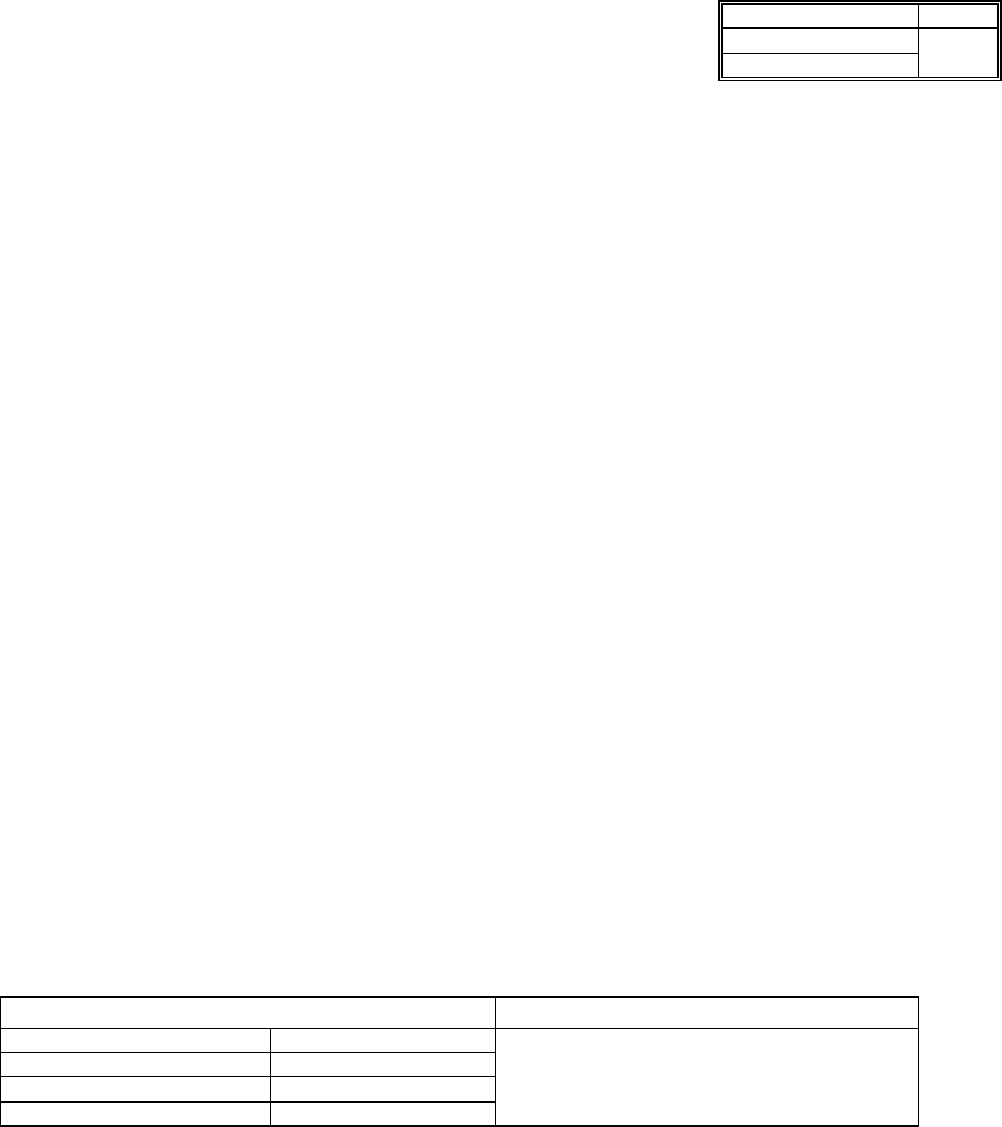
SPECIFICATION REV
497-0430074 A
18 OF 22
8.5 Product AQL (Acceptable Quality Level)
Due to anticipated low volume, AQL is not applicable at this time. AQL will be reevaluated if volume levels
increase significantly.
8.5.1. MTBF
The RBA shall meet an MTBF goal of 500,000 hours whereby the workload is 1000 actuations per day
per Bellcore TR-332.
8.5.2. Definition of Failure
An RBA is considered to be a failed RBA if the RBA experiences one or more problems listed below. A
failed RBA will be excluded from MTBF measurement if the failure is caused by misuse or abuse during
normal operation.
• ESL’s do not respond to RBA commands when RBA is located within specified range of ESL (Battery
OK)
• Push Switch does not work
• Enclosure is cracked and/or broken
• Excessive power consumption
8.6 Quality Goal
The supplier is requested to make continuous quality improvements to the RBA until the quality targets
below are achieved.
Out-of-box Quality Goal Reliability Goal
Factory Out of Box 50 DPM
Shipping & Handling 50 DPM
All Others 50 DPM
Total 150 DPM
0.5 million hours MTBF
DPM = devices per million

SPECIFICATION REV
497-0430074 A
19 OF 22
9. Engineering Change Provisions
9.1 General
Any changes affecting manufactured or purchased parts, firmware programming, purchased equipment
performance, maintenance, interchangeability, spare parts, or other pre-established routines and
procedures of the physical assembly involving the product delivered to NCR must receive NCR’s written
approval prior to incorporation.
9.2 Request From Supplier
A request for approval will be submitted to NCR accompanied by evaluation samples where applicable.
NCR will respond within 60 days; however, no changes are to be made on products delivered to NCR
without NCR approval.
9.3 Approval
The NCR representative will analyze the change requested and give written approval or disapproval.
9.4 NCR Changes
Changes originating from NCR will be communicated to the supplier through NCR’s representative. If
NCR suggests changes to the supplier with respect to modifications of any product, unit, or part thereof,
the supplier shall study each suggested change and, within a reasonable time, not to exceed 60 days,
report to NCR as to the feasibility, price, modifications to the change, and the estimated time or serial
number of the product on which such change can be implemented. Such change shall not be made by
the supplier until official approval has been granted by NCR.
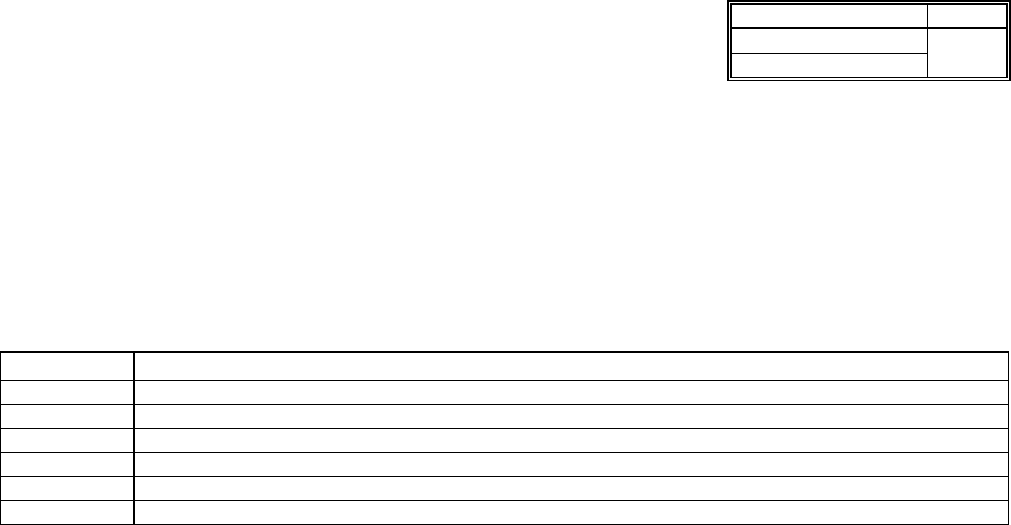
SPECIFICATION REV
497-0430074 A
20 OF 22
10. Design Qualification Test Requirements
The manufacturing supplier is responsible for the electrical and mechanical design and shall pursue
ultimate design-for-manufacturing. The manufacturing supplier should take responsibility for conducting
its Design Qualification Test and should report its results to NCR for approval prior to RBA mass
production.
NCR’s preference for the Design Qualification Test items that should be done by the manufacturing
supplier is as follows. Items below are subject to negotiation between the manufacturing supplier and
NCR when the manufacturing supplier does not have the capability to perform the test(s).
Par. Description
3.1.2 Operation
3.1.3 Transmitter
3.1.7.2 Battery Life
3.1.8 Environmental Test Requirements – Temperature & Humidity
3.1.9 Environmental Test Requirements – Shipping
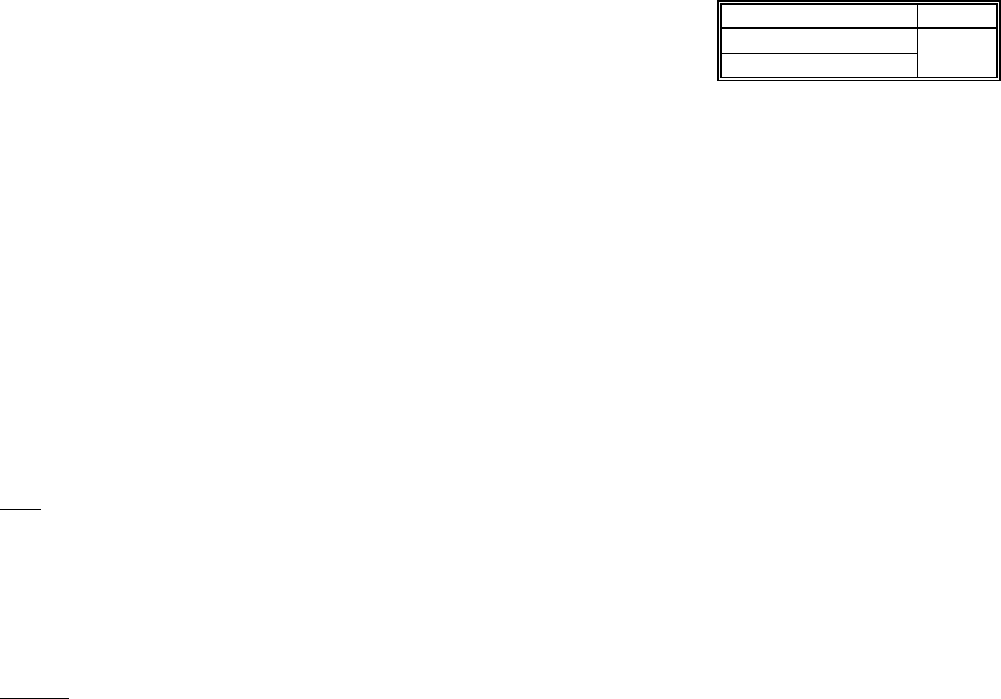
SPECIFICATION REV
497-0430074 A
21 OF 22
Appendix A: Regulatory Requirements
Product Description
• Hand-held device that activates specific displays of the NCR 7730 series ESLs
• Operating frequency is within 2.4 and 2.4835GHz and operates on a single frequency.
• Output power is 10mW EIRP (Equivalent Isotropically Radiated Power).
• Antenna is located within 20cm of the user.
USA
• FCC (Federal Communication Commission) Part 15 Subpart B, Class A – Unintentional Radiators
• FCC Part 15.250 - Intentional Radiators.
• Filing with Technical Competent Body (TCB) instead of FCC is possible for devices less than
15mW EIRP.
• RF) Exposure – Maximum Permissible Power (MPE) Calculations should suffice, however FCC
reserves the right to request Specific Absorption Rate (SAR) evaluation.
Canada
• ICES-003 EMI*
• RSS 139 Licensed Indoor/Outdoor use**
or
• RSS 210 Unlicensed Indoor use**
• Filing with Industry Canada required
• SAR evaluation per RSS 102. All handheld devices where the antenna is 20cm or closer to the
user are required to undergo SAR evaluation (Section 2.1 of RSS 102).
* Satisfied by FCC Part 15 Subpart B
**Satisfied by FCC Part 15 Subpart C

SPECIFICATION REV
497-0430074 A
22 OF 22
Appendix B: List of Countries for RBA Deployment
NORTH AMERICA
Country
1. Canada
2. United States